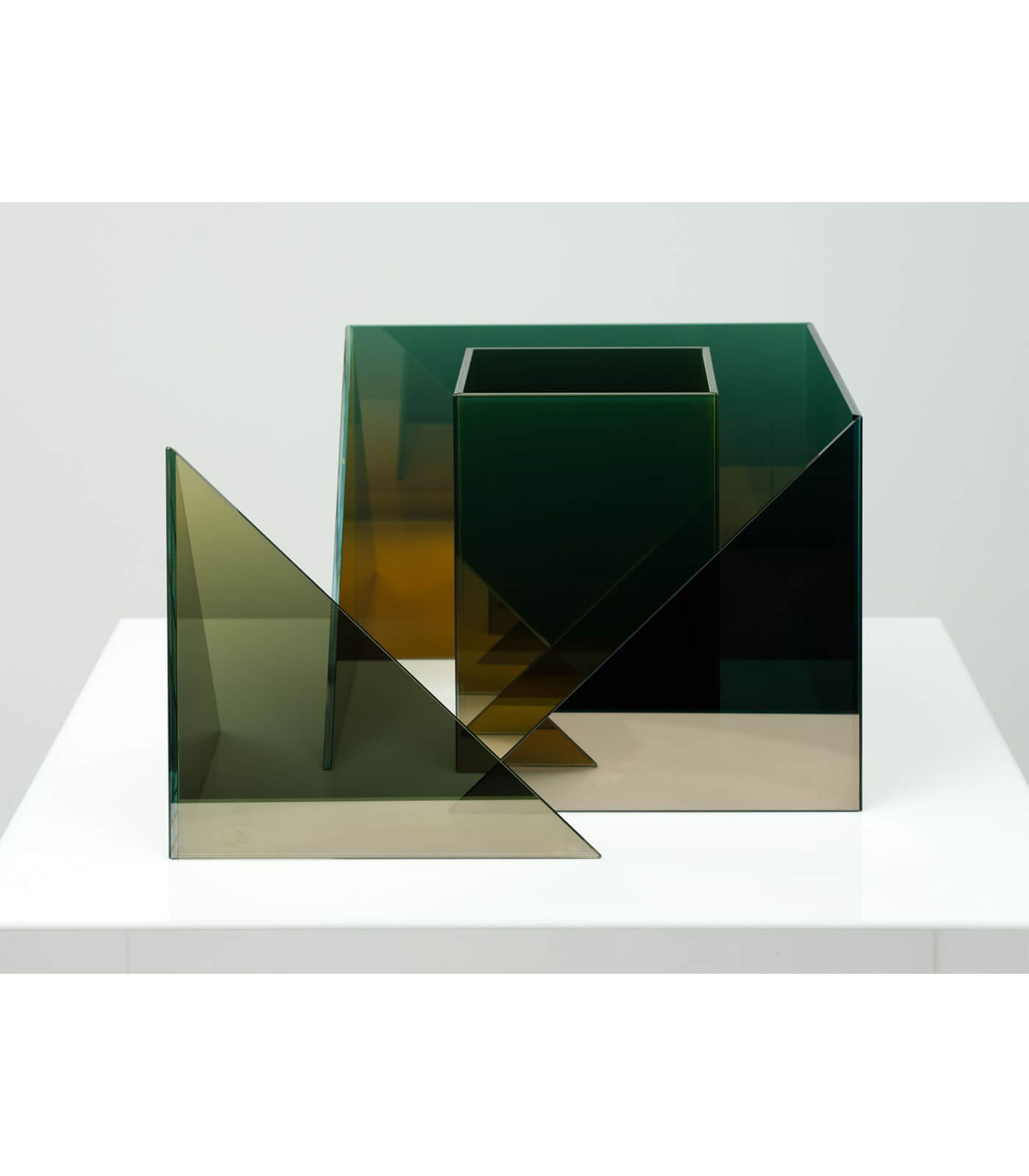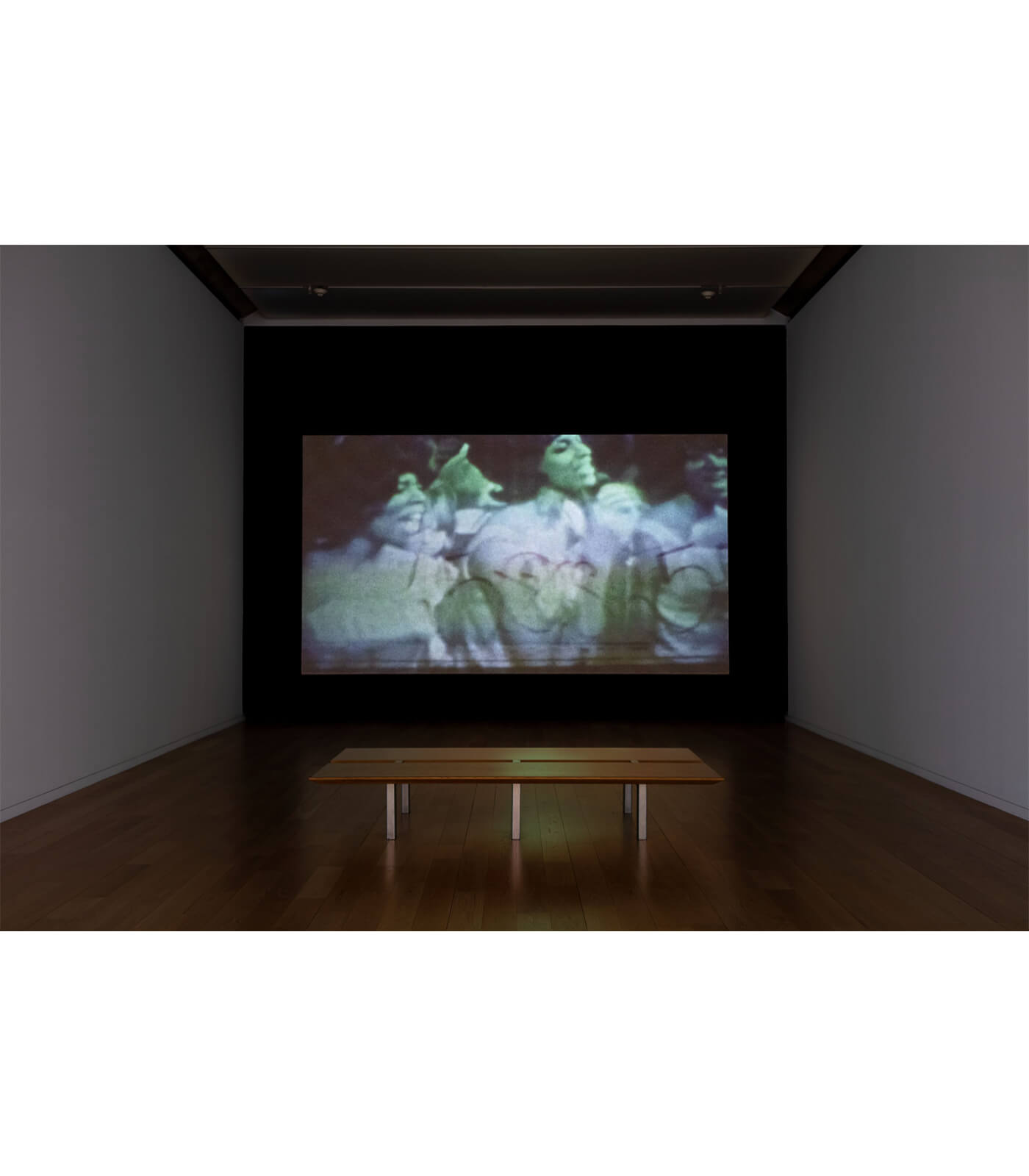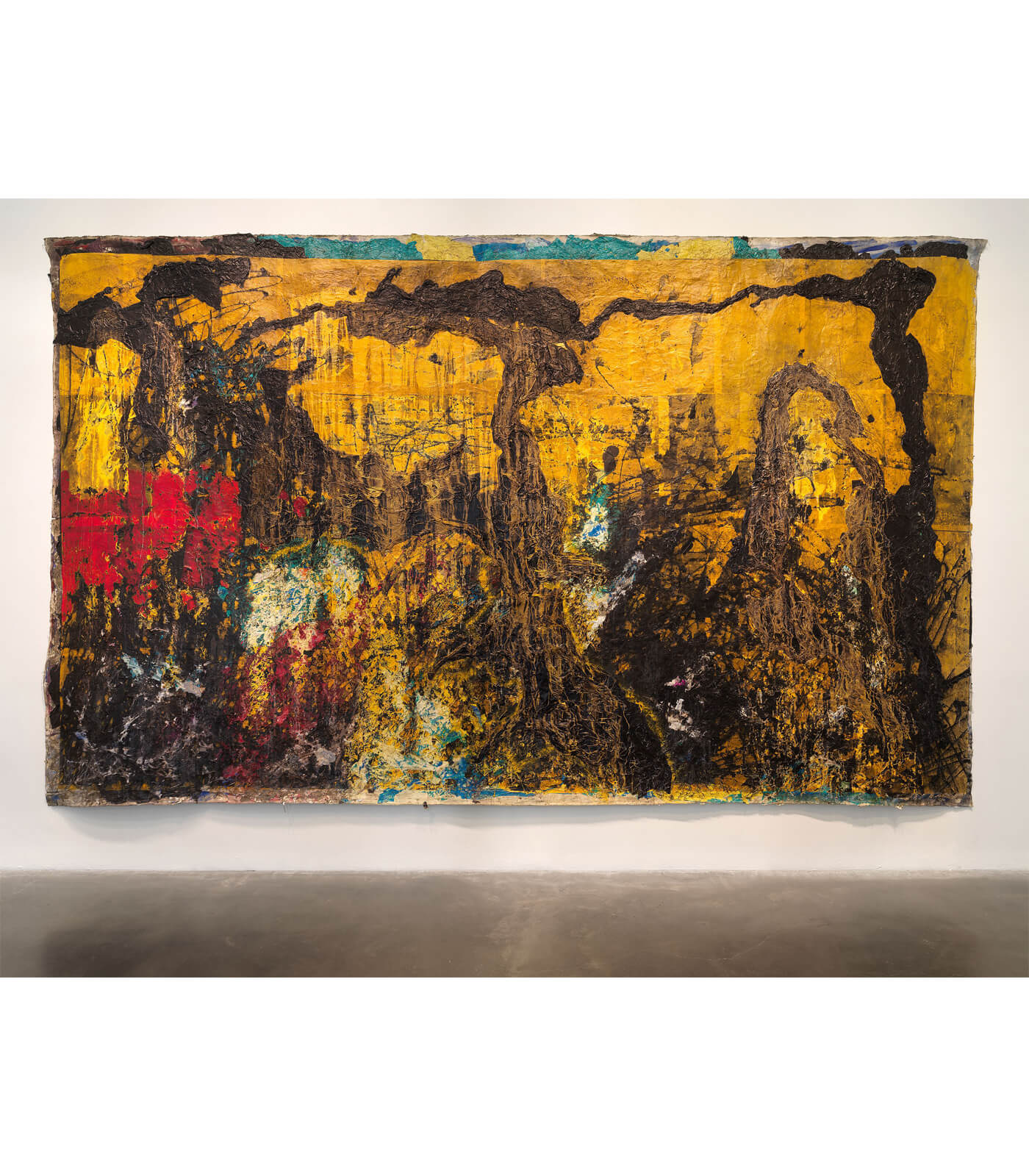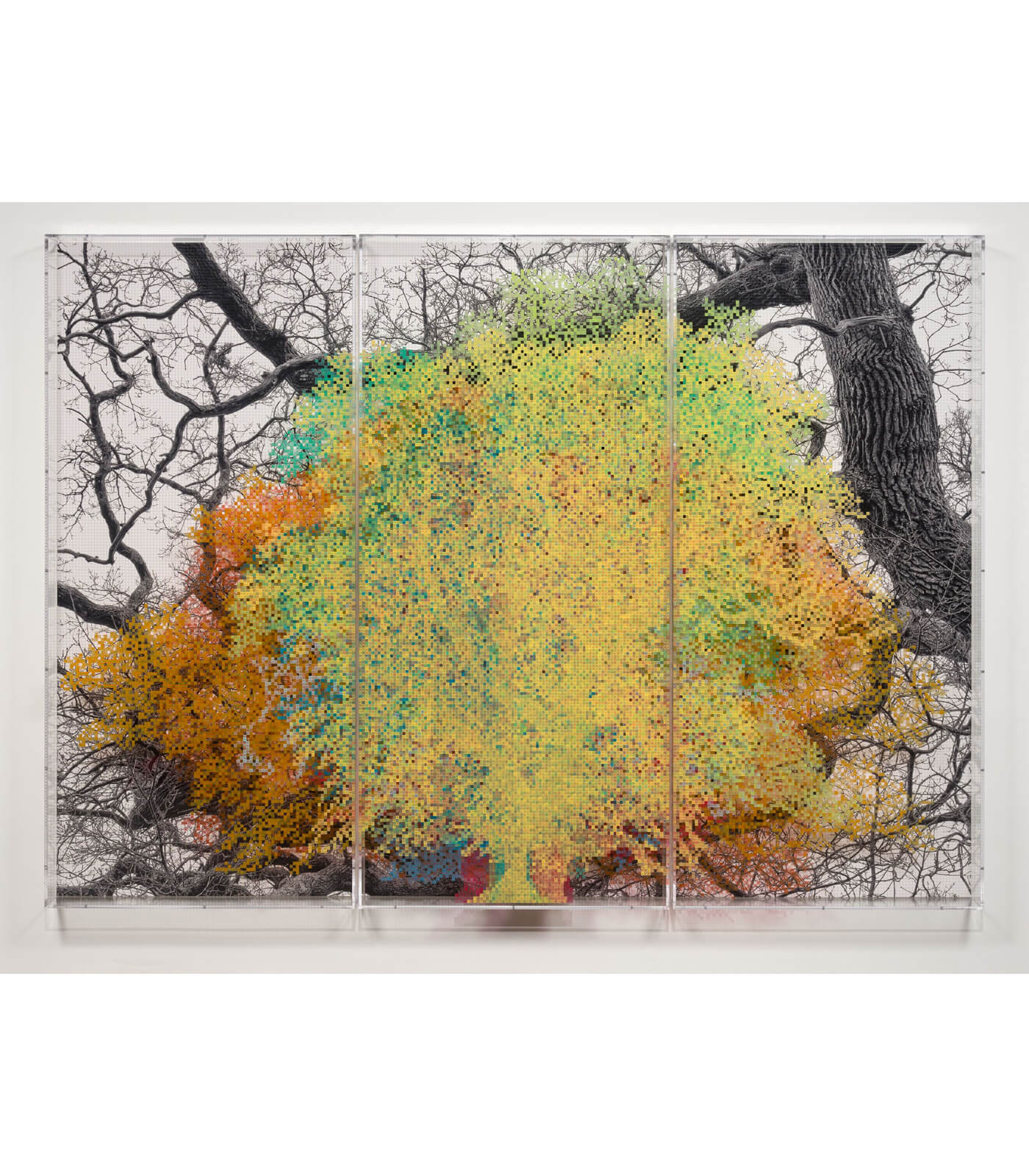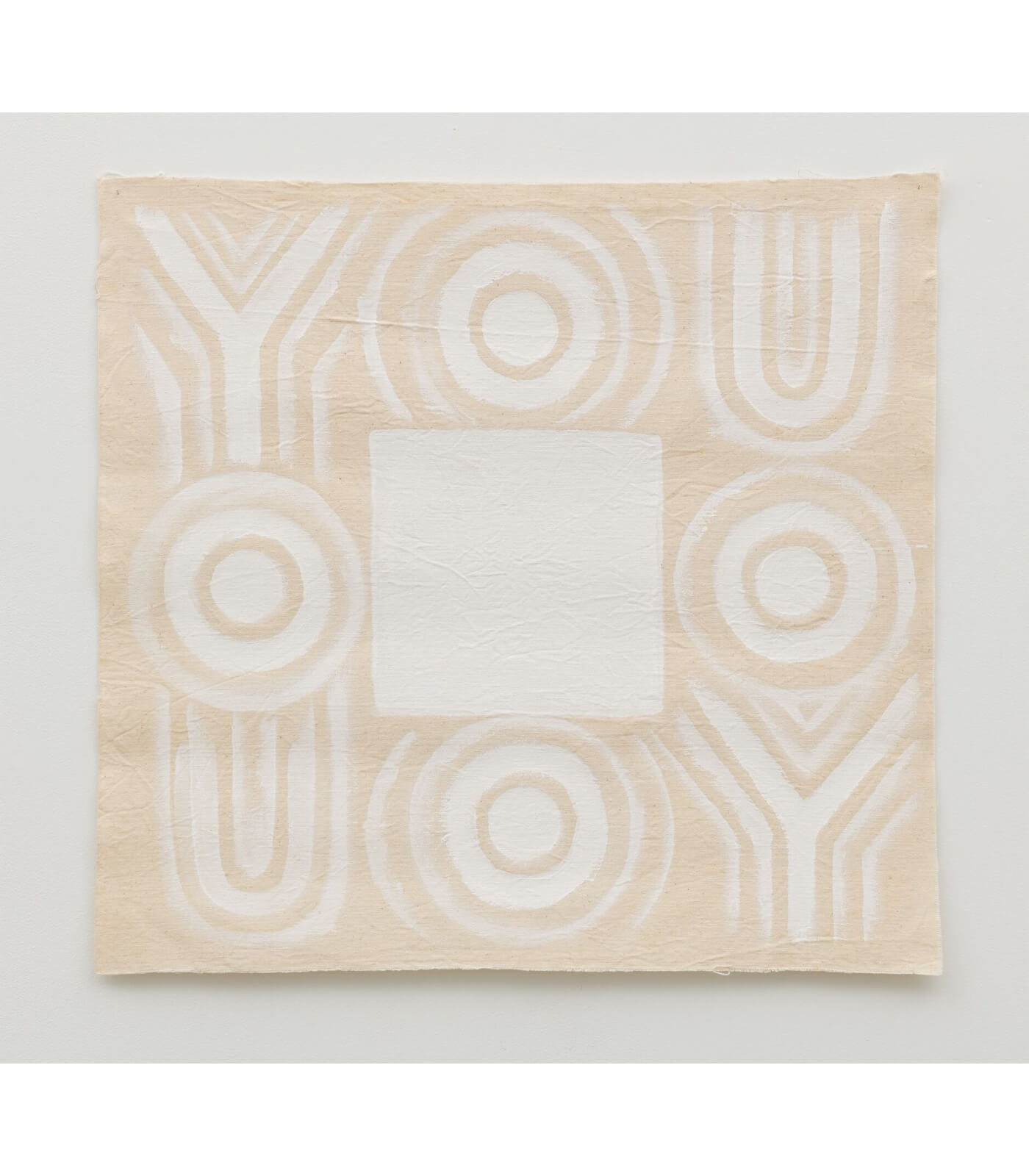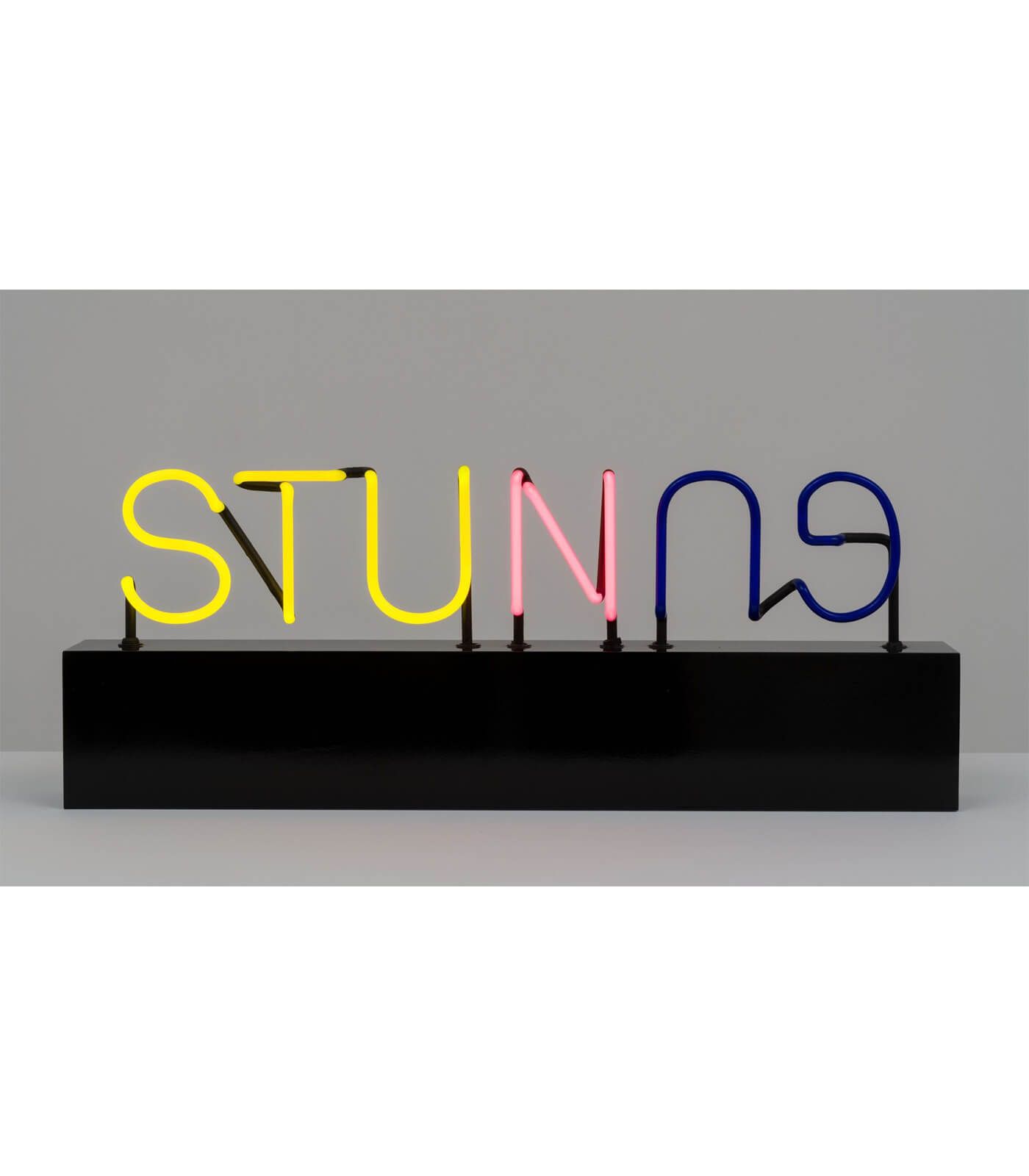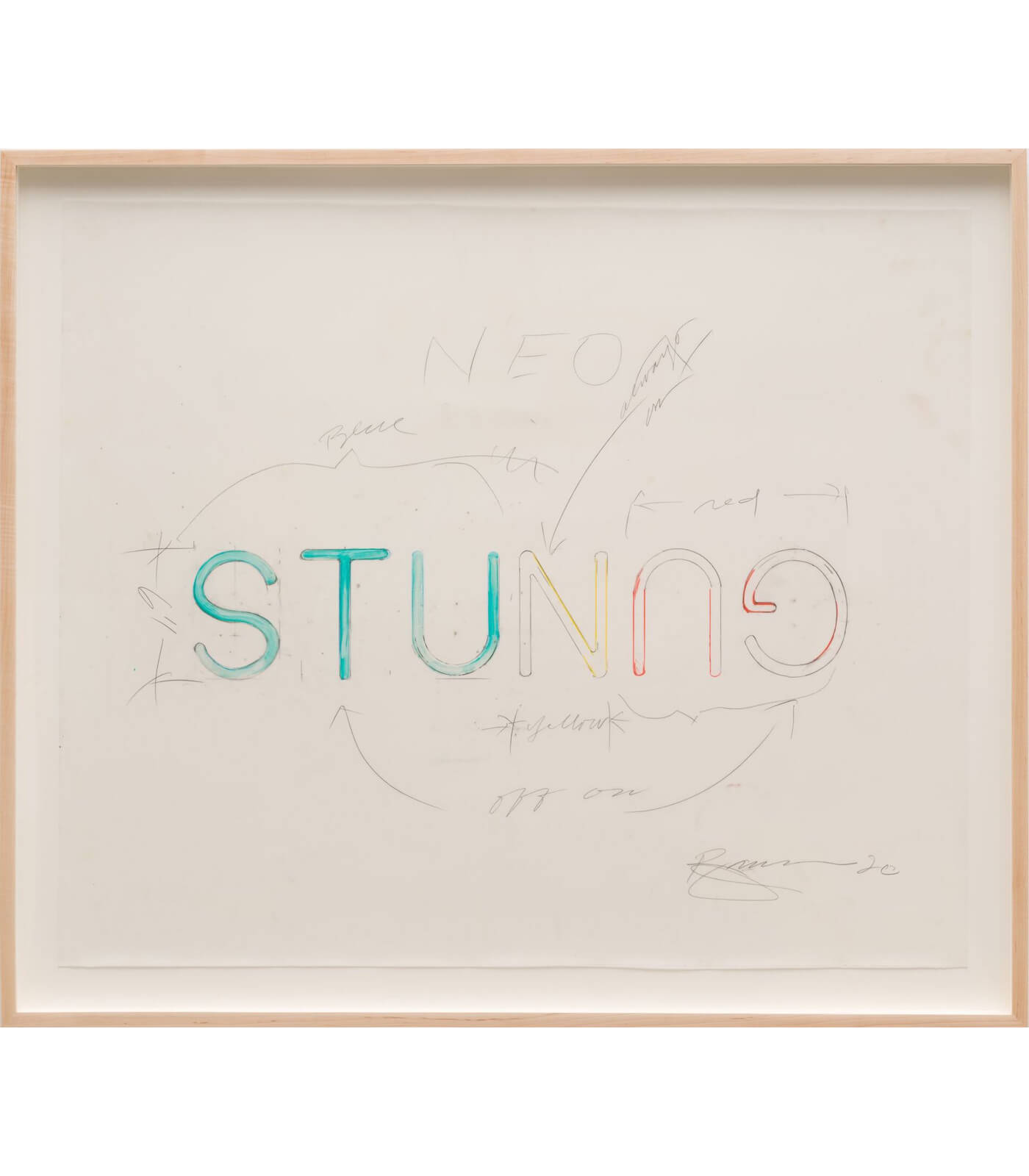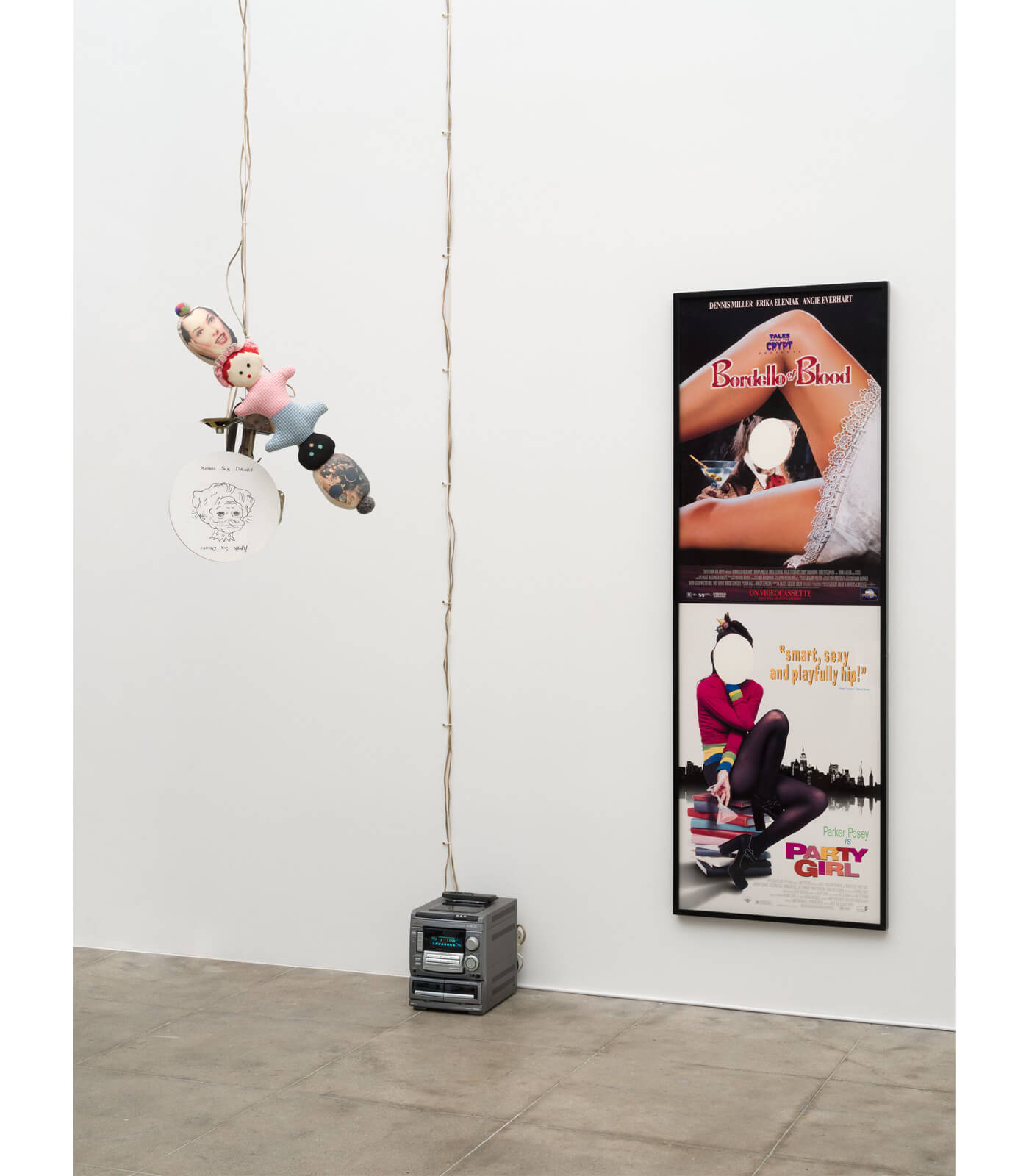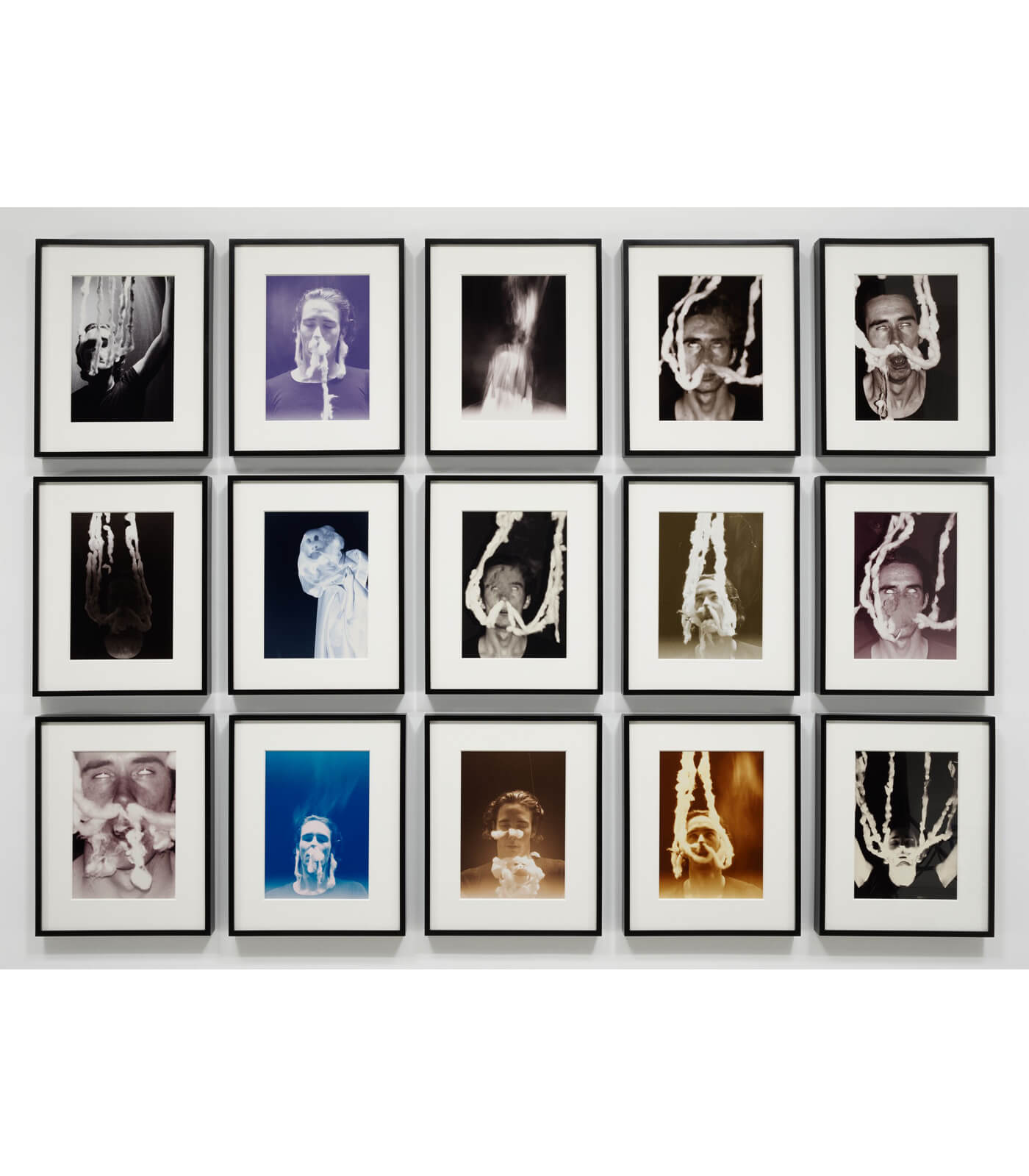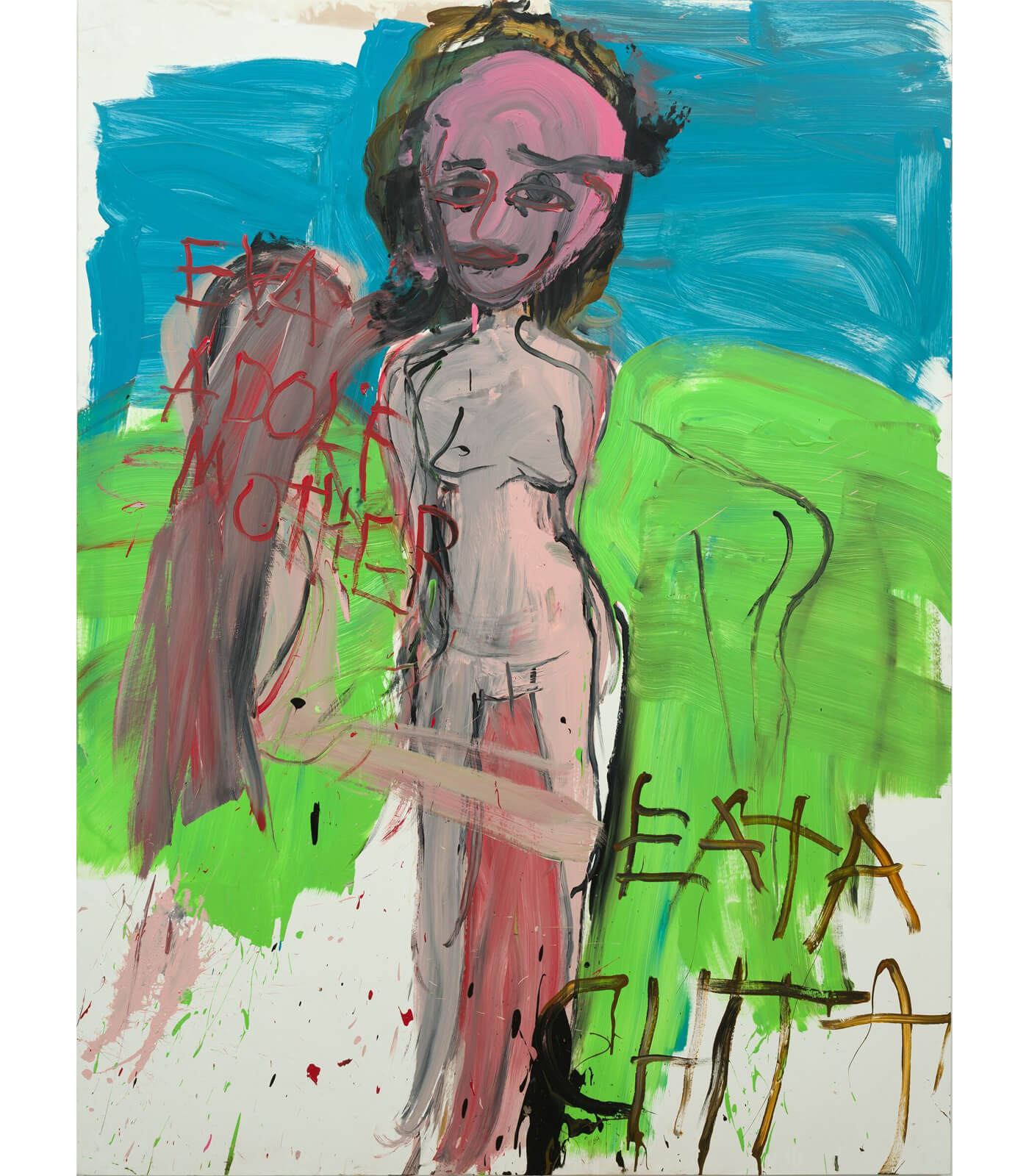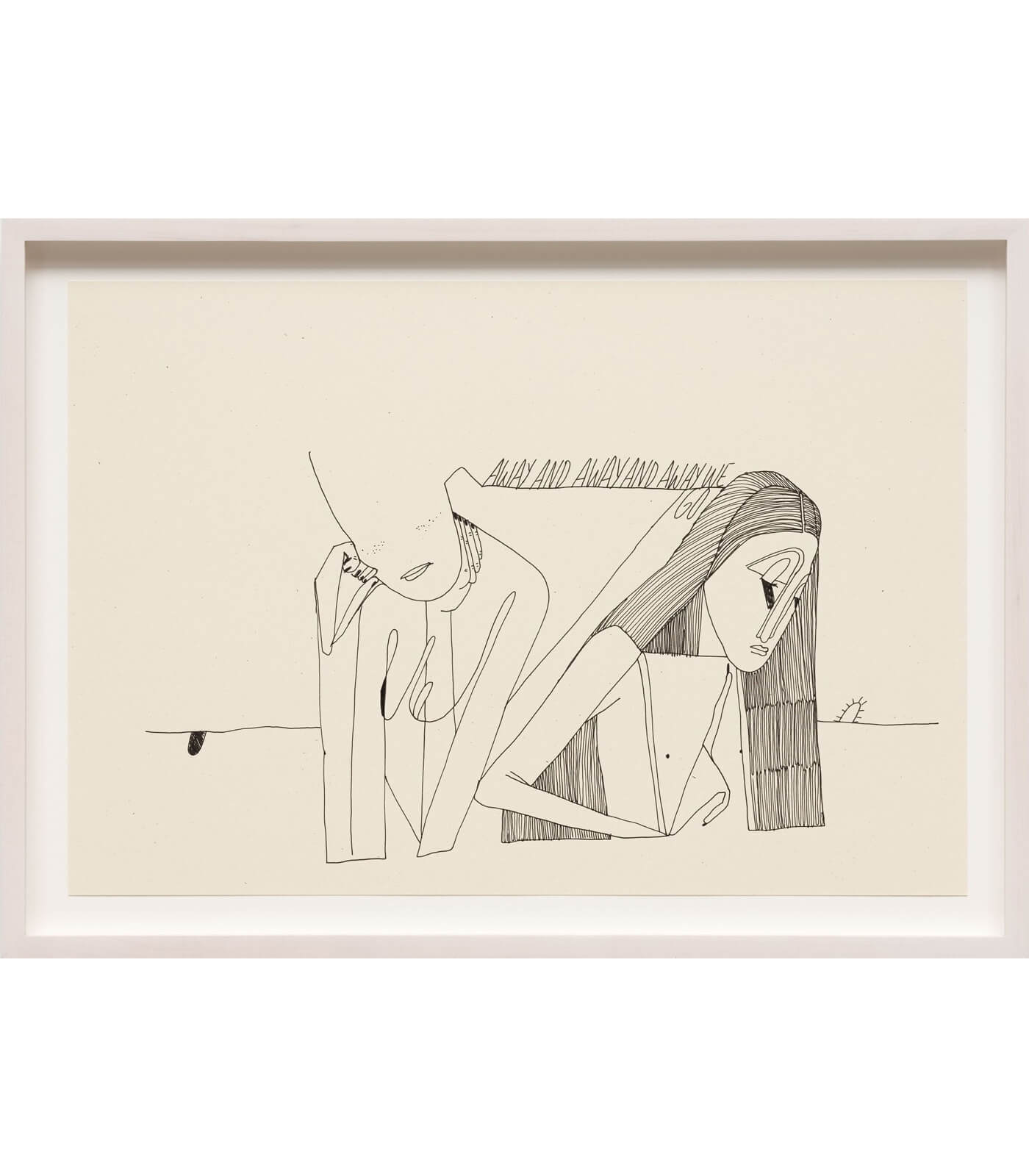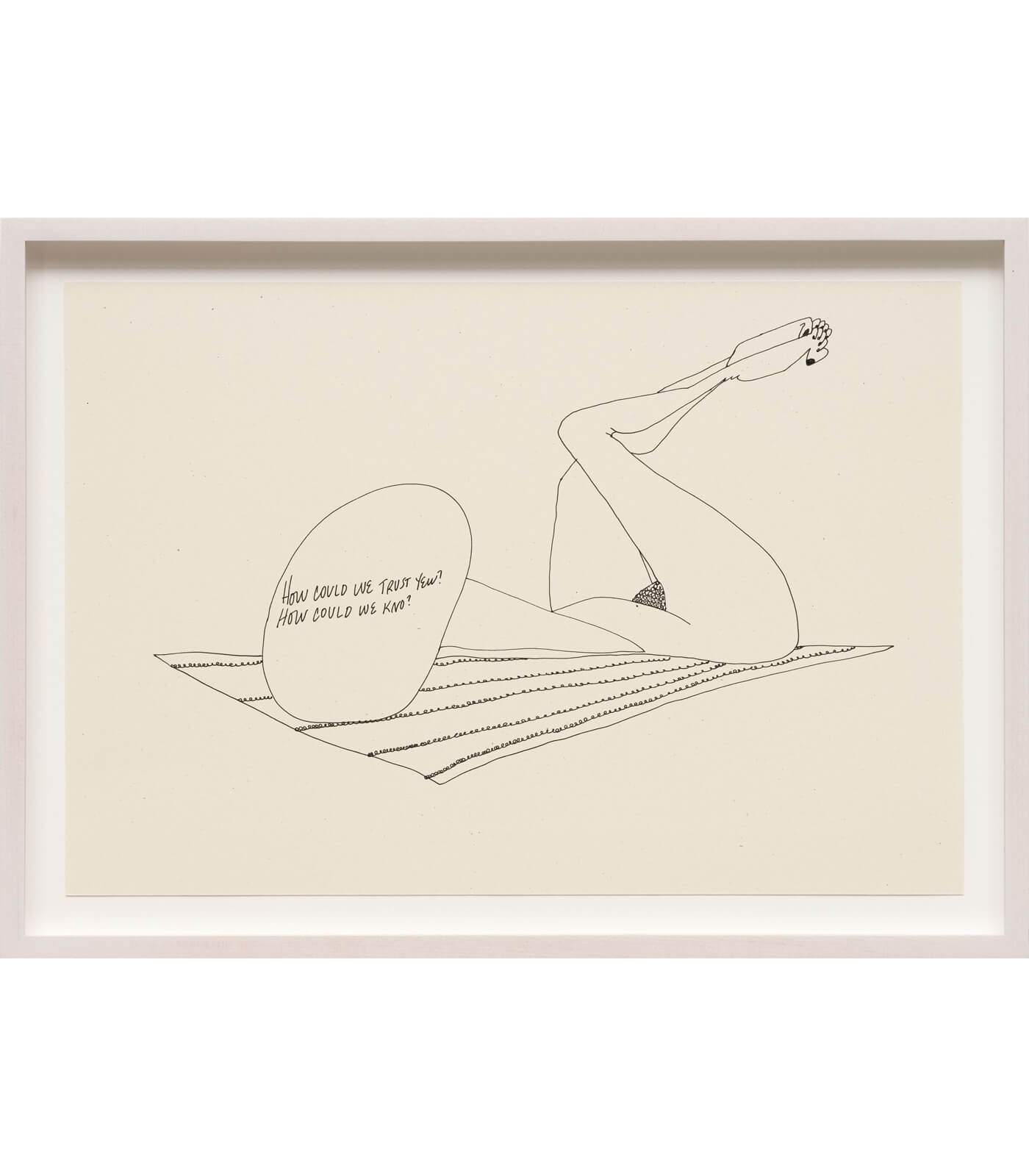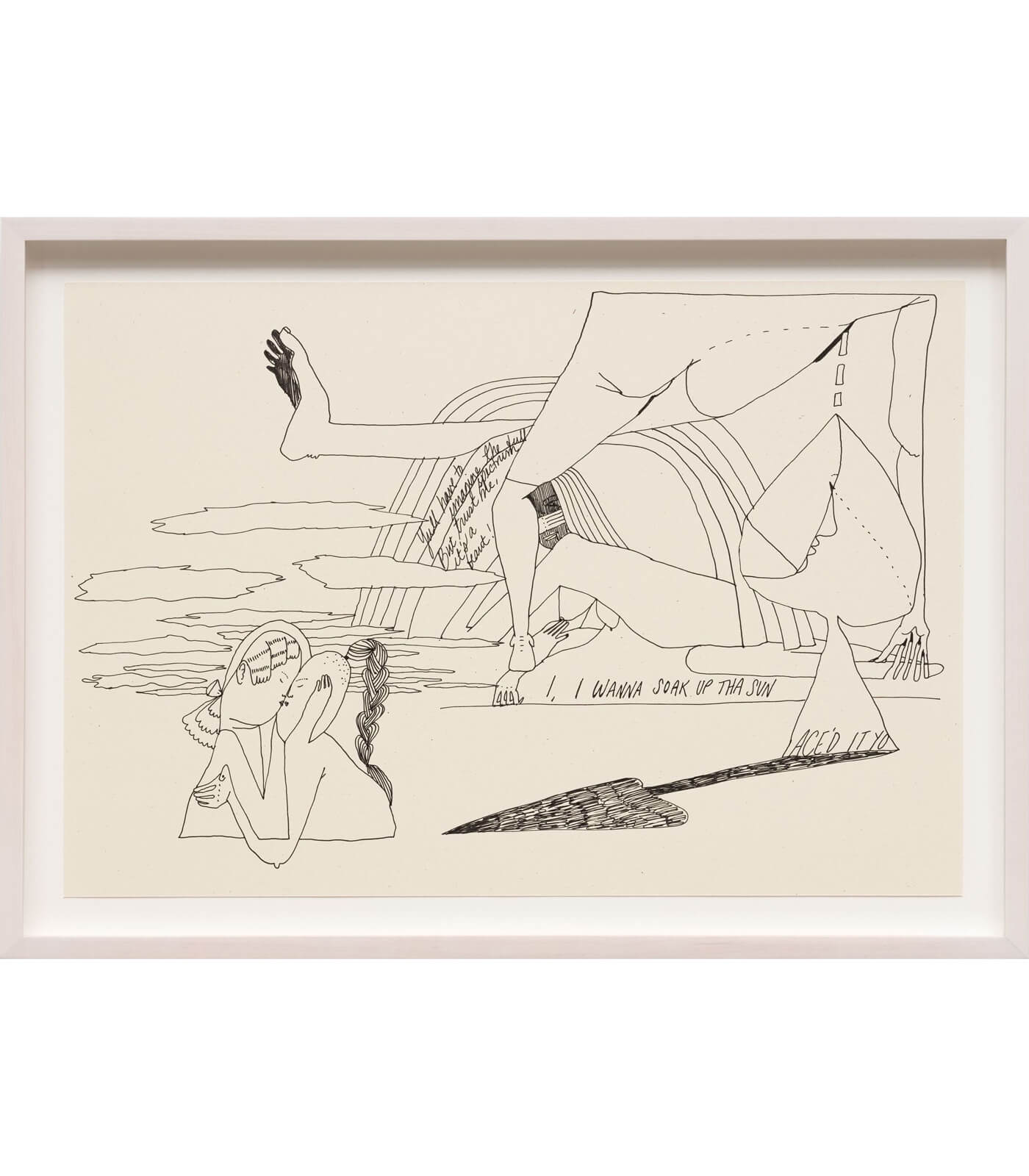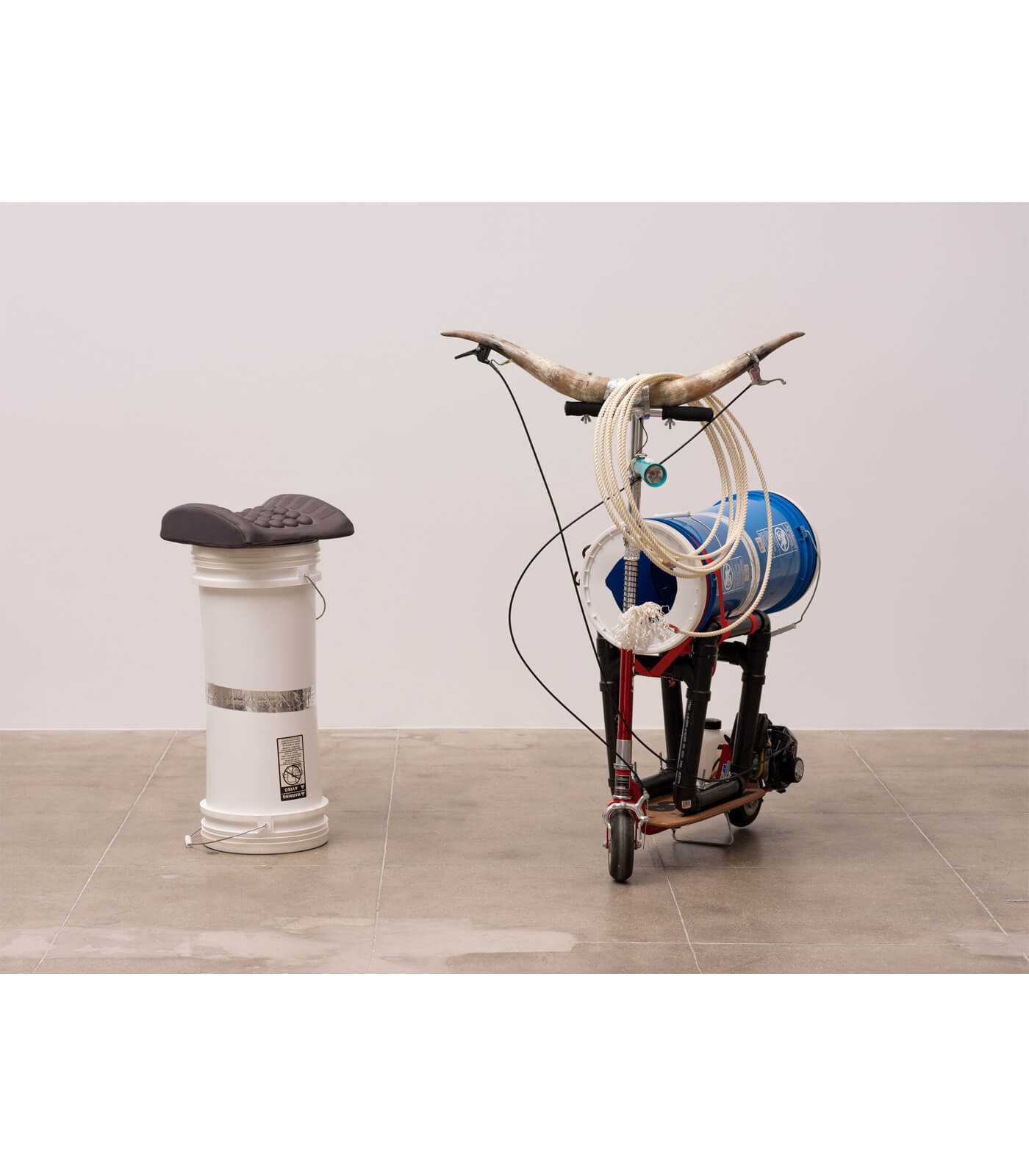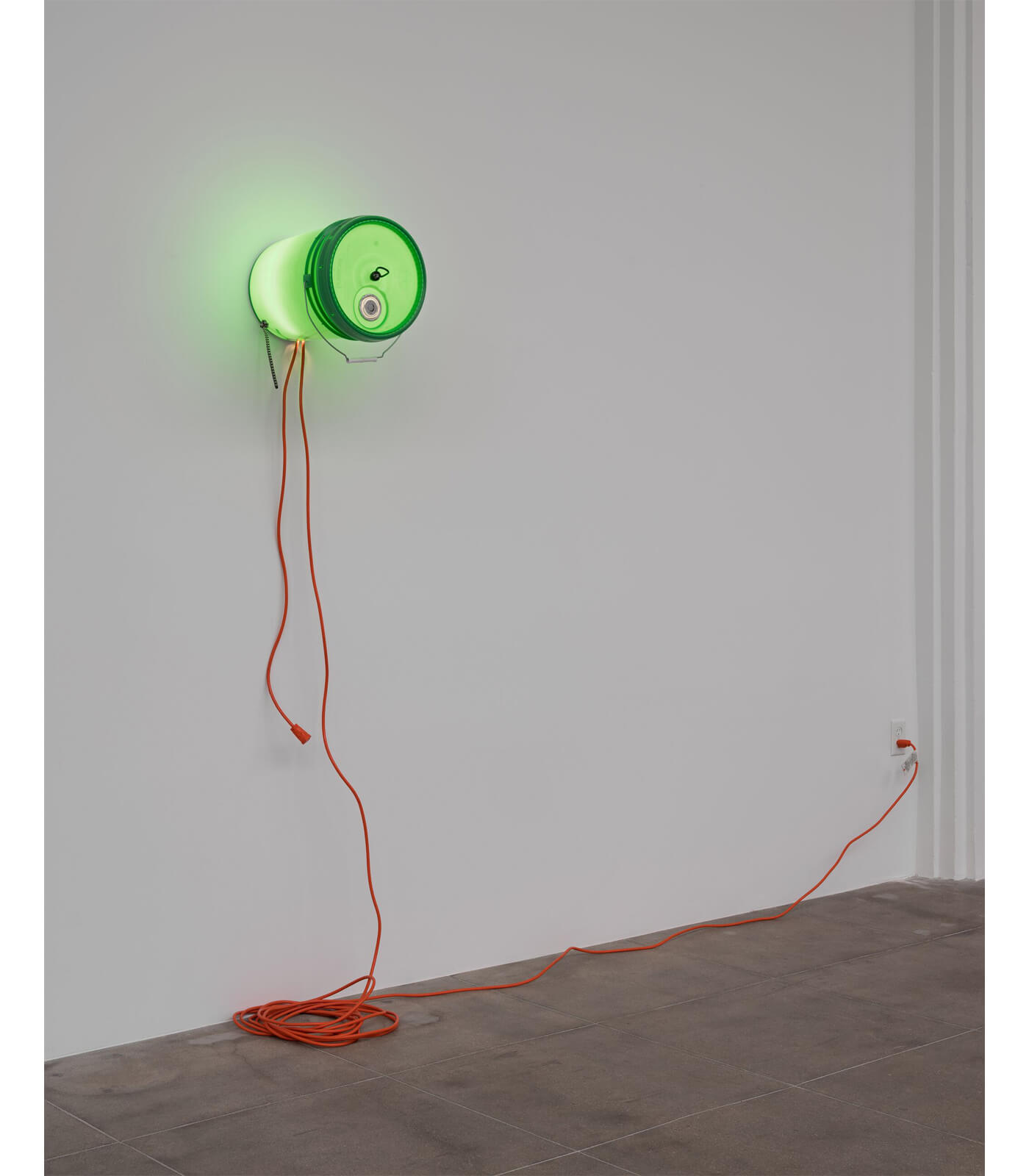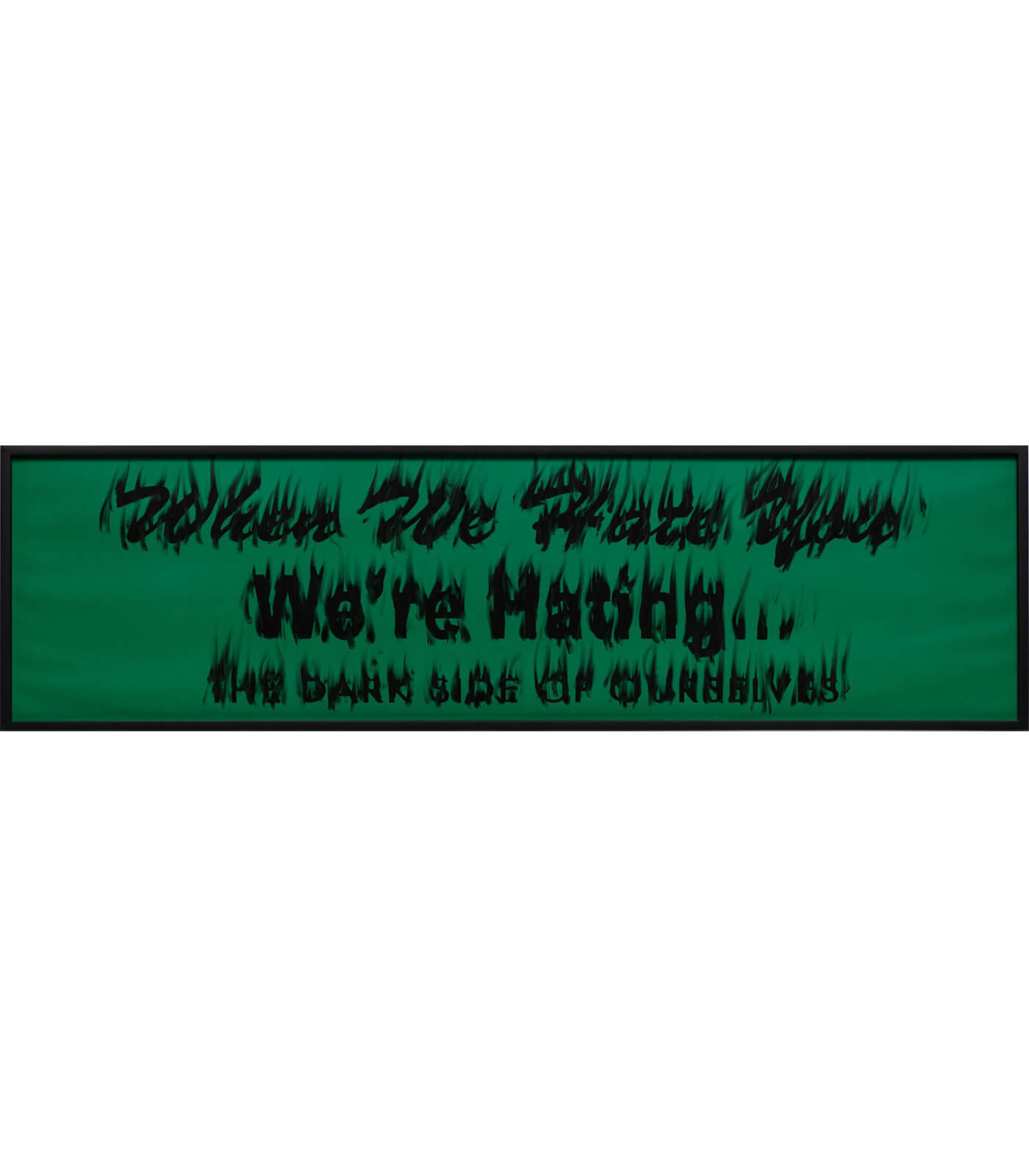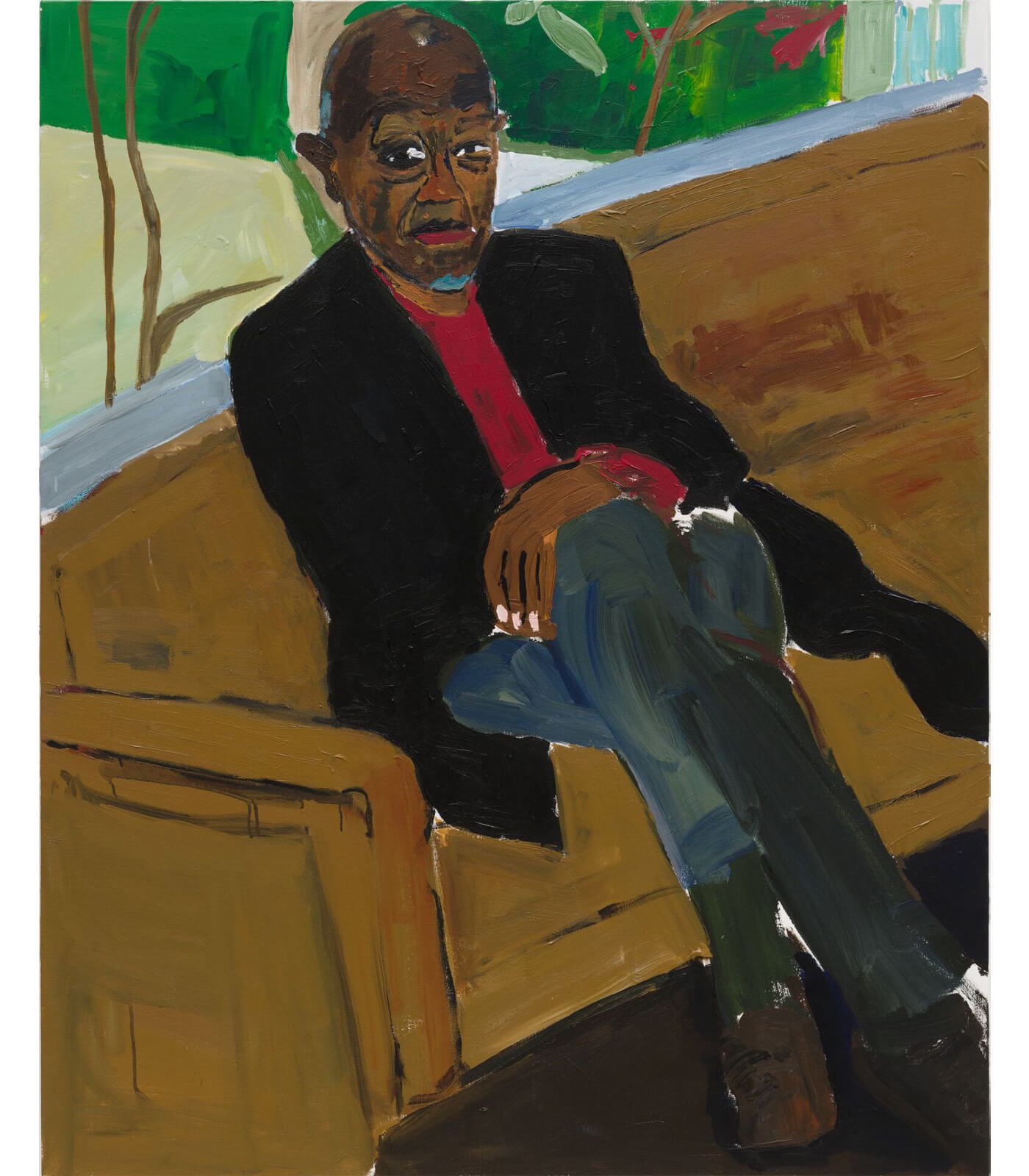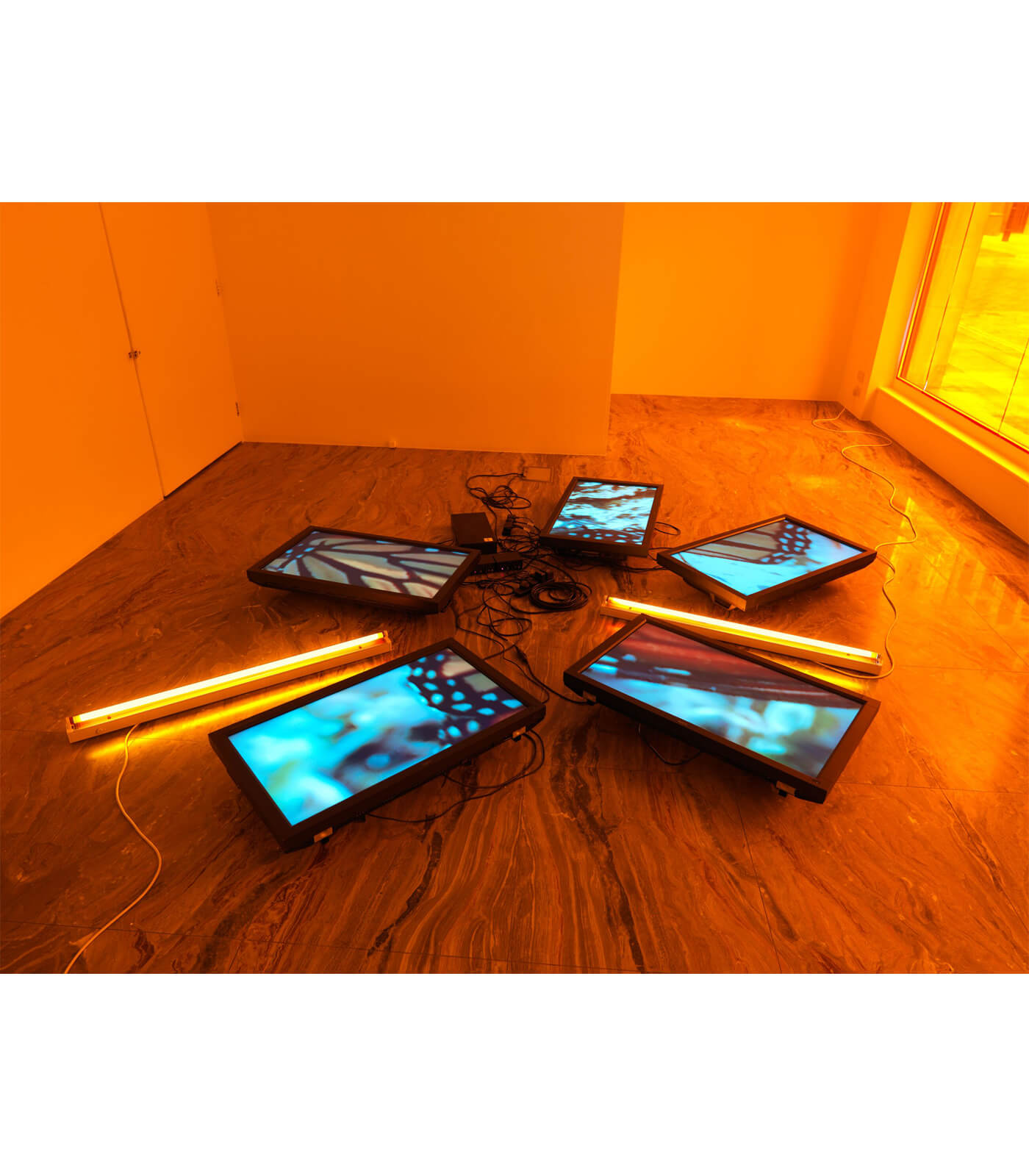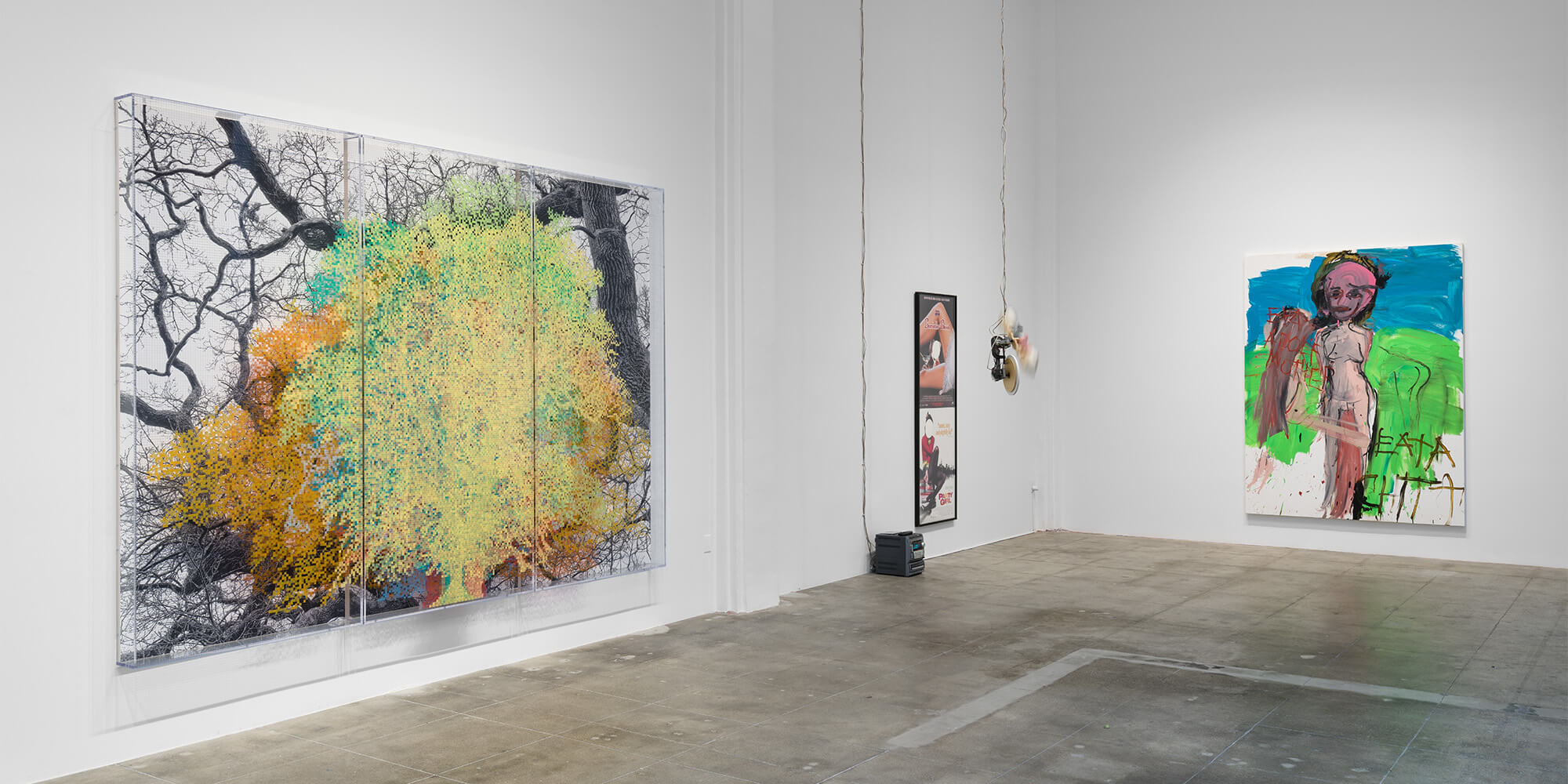
In Focus: LA Artists
8 July – 22 August 2021
Los Angeles
On the occasion of Hauser & Wirth’s 5-year anniversary in the Arts District, In Focus: LA Artists highlights the lasting contributions of the artists and foregrounds their influential practices, which have been instrumental in making Los Angeles an international capital of artistic innovation and arts education.

Explore the presentation
Hauser & Wirth spotlights its Los Angeles artists with a multimedia group presentation of nearly 30 artworks. ‘In Focus: LA Artists’ showcases the groundbreaking techniques, diverse viewpoints, and intergenerational relationships of the gallery artists who call one of the world’s most creative cities home: Larry Bell, Mark Bradford, Charles Gaines, Richard Jackson, Paul McCarthy, Christina Quarles, Gary Simmons, Henry Taylor, Diana Thater, and the late artists Luchita Hurtado, Mike Kelley, and Jason Rhoades.
Paul McCarthy, Jason Rhoades, Richard Jackson and Iwan Wirth at the locomotive shed in St. Gallen, December 1998
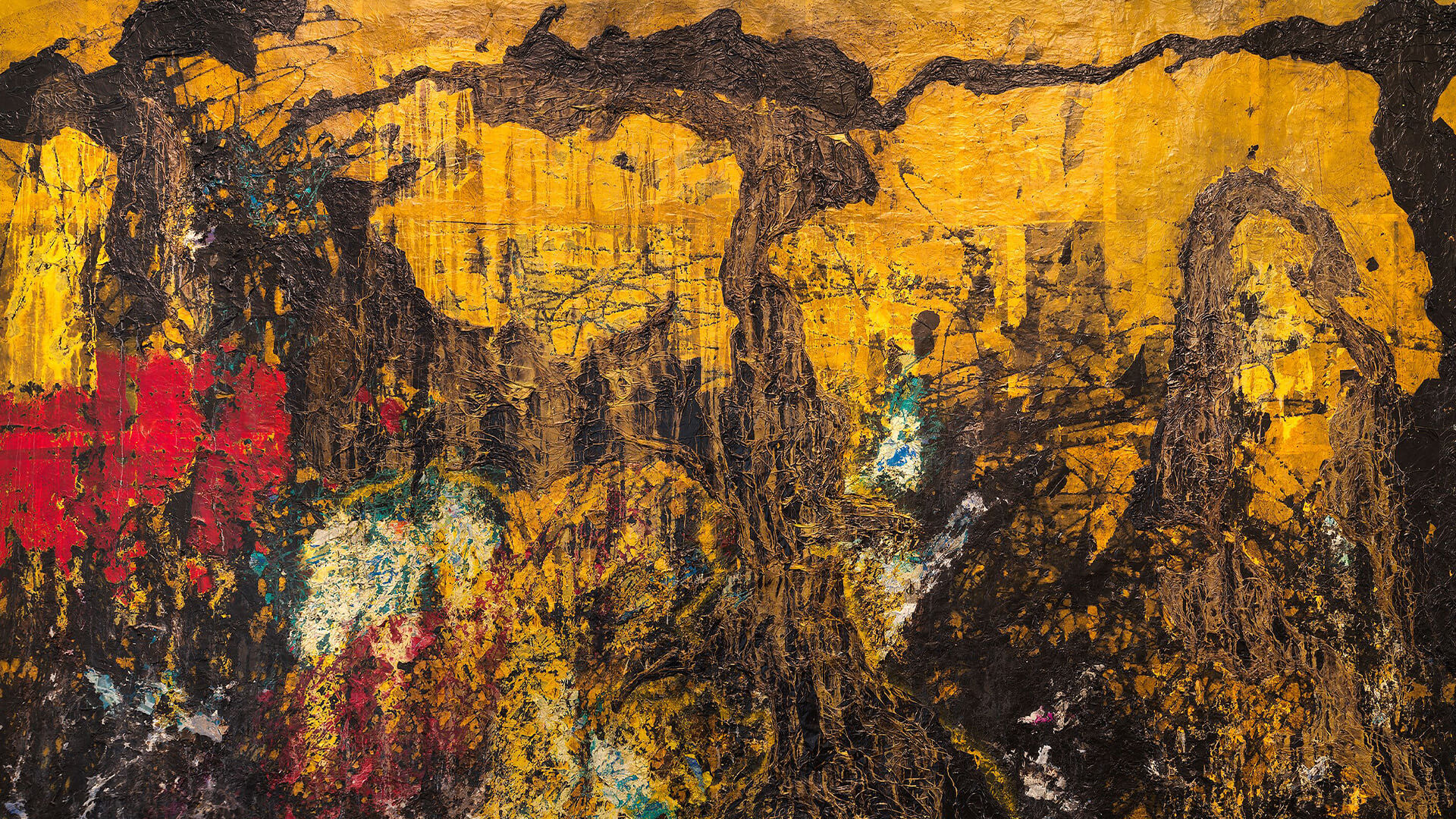
Highlights will include the West Coast debut of Mark Bradford’s ‘Untitled’ (2020), recently exhibited in the powerful group exhibition ‘Grief and Grievance’ at the New Museum in New York, as well as Bradford’s video work ‘Dancing in the Street’ (2019), which was included in the artist’s solo exhibition ‘End Papers’ at the Modern Art Museum of Fort Worth. Other highlights will include Mike Kelley’s multimedia sculpture ‘Party Girl’ (1998), Jason Rhoades’ irreverent sculptures from the ‘90s, a visually opulent video work by Diana Thater, a recent Numbers and Trees gridwork by Charles Gaines, and paintings by Luchita Hurtado, Paul McCarthy, and Henry Taylor.
Mark Bradford, Untitled (detail), 2020
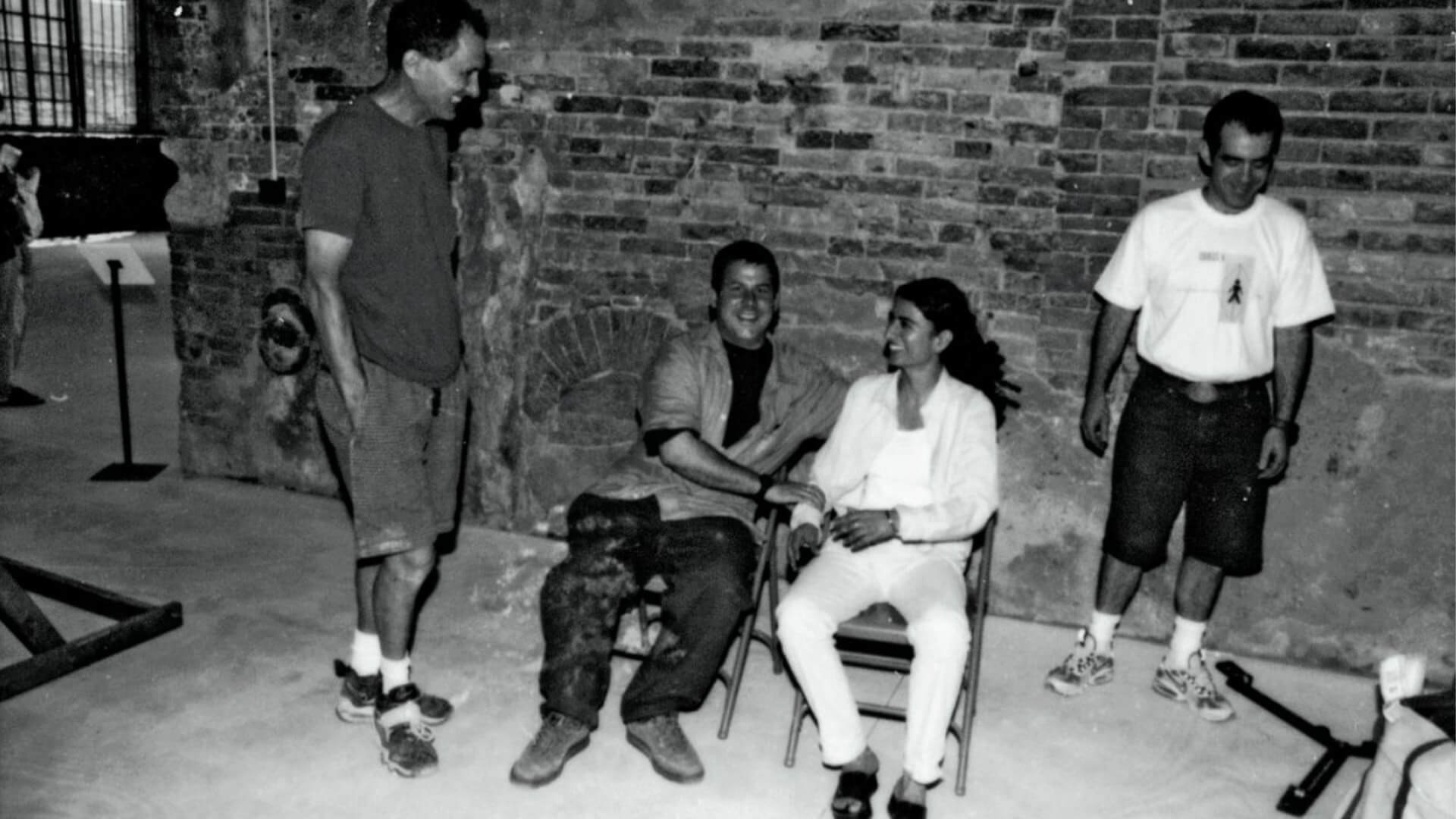
The presentation will also shine a light on the intergenerational, mentor-mentee relationships between the gallery’s LA artists, most of whom have studied and taught at the city’s esteemed art schools. Both Paul McCarthy and Richard Jackson taught Jason Rhoades at UCLA. Charles Gaines, among CalArts’ most influential educators for over 30 years, taught Mark Bradford, Henry Taylor, and Gary Simmons, who was also mentored by Mike Kelley at CalArts in the 1990s. While at ArtCenter, Kelley also was a teacher for Diana Thater, who has in turn taught legions of up-and-coming artists at the revered Pasadena-based school.
Rachel Khedoori, Jason Rhoades and Richard Jackson in Venice, 1999
Selections from the group presentation will be featured in the gallery’s digital offering as part of the Frieze Viewing Room, online from 27 July – 1 August 2021. ‘In Focus: LA Artists’ will also be on view during the inaugural Gallery Weekend Los Angeles, a weekend organized by Gallery Association Los Angeles to encourage visitors to return to physical gallery spaces throughout the city in the new post-pandemic summer 2021 season.
Jason Rhoades with The Future is Filled with Opportunities (Ridable Steer) behind the artist's studio in Inglewood California 1995

Hauser & Wirth opened its first Los Angeles location in March 2016 in the heart of the burgeoning Downtown Los Angeles Arts District at 901 East 3rd Street. Occupying the former Globe Mills flour mill complex comprised of late 19th and early 20th century buildings, Hauser & Wirth Arts District is a vibrant communal space that links art and architecture with a dynamic events program.
Globe Grain and Milling Company
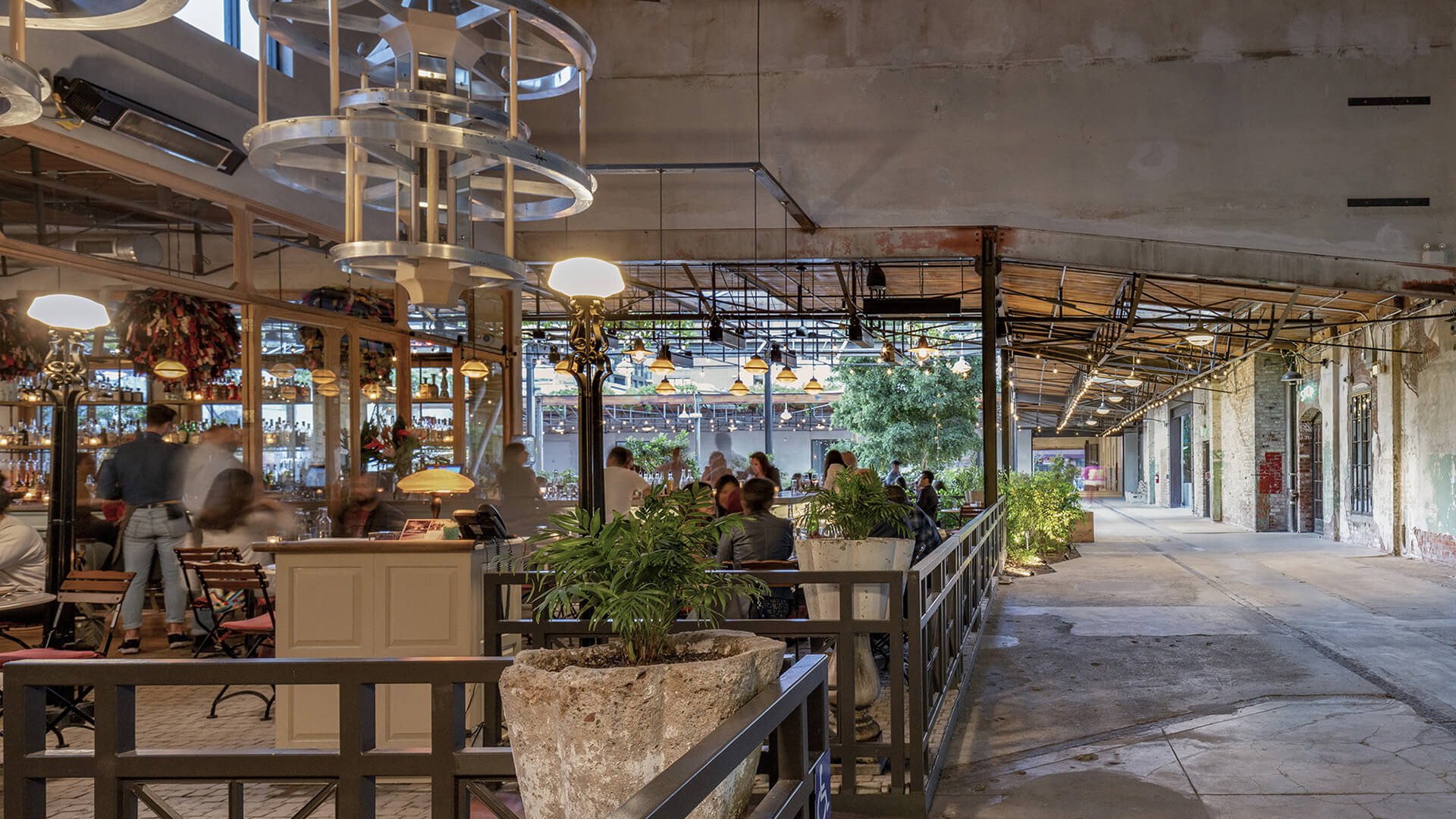
The Globe Mills site was restored by Los Angeles real estate company Creative Space LA in consultation with Annabelle Selldorf, Principal of Selldorf Architects. In 2018, Hauser & Wirth Arts District was awarded the Chair’s Award, Los Angeles Conservancy’s highest honor recognizing the importance of preserving historic landmarks that make the city unique. The complex features Manuela, the onsite restaurant offering seasonal, locally-sourced produce, and an open-air courtyard and garden, a gallery shop, and ARTBOOK’s first store in Los Angeles.
Hauser & Wirth Los Angeles, 2019

On View in Los Angeles
‘In Focus: LA Artists’ is now open at limited capacity Tuesday through Sunday, 11 am – 6 pm. Free entry. No booking necessary.
Please join us on Saturday, July 31 for a day of food, music, books, and exclusive offers as part of the inaugural festivities celebrating Gallery Weekend Los Angeles.
Images: Paul McCarthy, Jason Rhoades, Richard Jackson and Iwan Wirth at the locomotive shed in St. Gallen, December 1998; Mark Bradford, Untitled (detail), 2020, Installation view, ‘Grief and Grievance: Art and Mourning in America,’ New Museum, New York NY, 2021 © Mark Bradford. Courtesy the artist and New Museum. Photo: Dario Lasagni; Rachel Khedoori, Jason Rhoades and Richard Jackson in Venice, 1999; Jason Rhoades with The Future is Filled with Opportunities (Ridable Steer) behind the artist's studio in Inglewood California 1995; Globe Grain and Milling Company; Hauser & Wirth Los Angeles, 2019. Photo: Elon Schoenholz; Hauser & Wirth Los Angelos Exterior, 2016. Photo: Joshua Targownik / targophoto.com
About the Artists
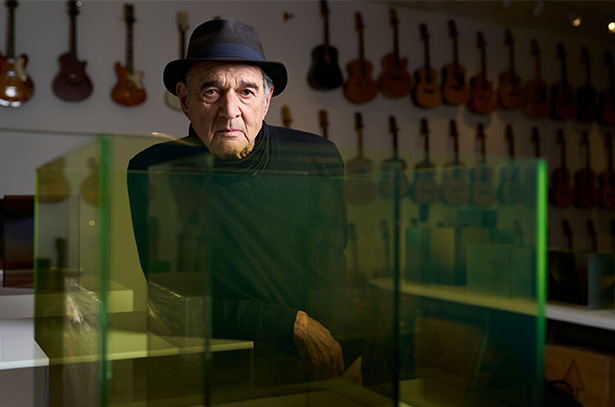
Larry Bell
Larry Bell is one of the most renowned and influential artists to emerge from the Los Angeles art scene of the 1960s, alongside contemporaries Ed Ruscha and Robert Irwin, and had garnered international repute by the age of 30. Known foremost for his refined surface treatment of glass and explorations of light, reflection and shadow through the material, Bell’s significant oeuvre extends from painting and works on paper to glass sculptures and furniture design.Bell’s understanding of the potential of glass and light allows him to expand visual and physical fields of perception, and his sculptures to surpass traditional bounds of the medium. He has said: ‘Although we tend to think of glass as a window, it is a solid liquid that has at once three distinctive qualities: it reflects light, it absorbs light, and it transmits light all at the same time.’
Bell’s use of commercial industrial processes in his studio, located in Venice, California since the 1960s and Taos, New Mexico since the 1970s, demonstrates his unparalleled skill and dedication in each step of his sculptures’ fabrication. Since 1969, his studio has managed its own high-vacuum coating system that allows him to deposit thin metal films onto his glass surfaces, harnessing a little known technique developed for aeronautics to create an unprecedented body of work.
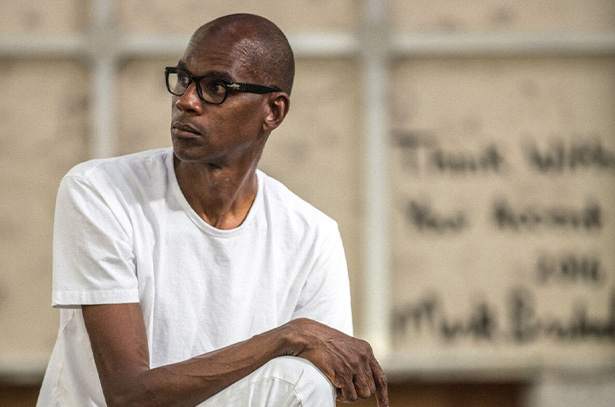
Mark Bradford
Mark Bradford (b. 1961 in Los Angeles; lives and works in Los Angeles) is a contemporary artist best known for his large-scale abstract paintings created out of paper. Characterized by its layered formal, material, and conceptual complexity, Bradford’s work explores social and political structures that objectify marginalized communities and the bodies of vulnerable populations. Just as essential to Bradford’s work is a social engagement practice through which he reframes objectifying societal structures by bringing contemporary art and ideas into communities with limited access to museums and cultural institutions.
Using everyday materials and tools from the aisles of the hardware store, Bradford has created a unique artistic language. Referred to frequently as ‘social abstraction,’ Bradford’s work is rooted in his understanding that all materials and techniques are embedded with meaning that precedes their artistic utility. His signature style developed out of his early experimentation with end papers, the small, translucent tissue papers used in hairdressing; he has since experimented with other types of paper, including maps, billboards, movie posters, comic books, and ‘merchant posters’ that advertise predatory services in economically distressed neighborhoods.
After gluing an image pre-selected for its historical significance onto canvas, Bradford outlines it with rope or caulk before affixing numerous layers of different types of paper. The artist then lacerates, erodes, and excavates the surfaces of his paintings using ‘tools of civilization’ to reveal intersections between the layers of signifying materials, thereby transforming and expanding the medium of painting.
Born in South Los Angeles, Bradford moved to LA’s beachside Santa Monica neighborhood with his mother at age 11. Throughout his childhood he worked in his mother’s beauty salon in Leimert Park where he first developed a curiosity in artistic and creative expression, and after high school, Bradford spent his summers traveling in Europe. His experiences visiting museums and consuming art left an enduring impression, and for the first time, at the age of 31, he began his formal arts education.
Bradford received his BFA from the California Institute of the Arts (CalArts) in Valencia in 1995 and his MFA from CalArts in 1997. Bradford received his first solo exhibition, ‘Floss,’ at the San Francisco Art Institute’s Walter & McBean Galleries in 1998 and his New York museum debut in ‘Freestyle’ at the Studio Museum in Harlem in 2001. In 2006, Bradford participated in the Whitney Biennial at the Whitney Museum of American Art where he won the coveted Bucksbaum Award, leading to his first major solo museum exhibition the following year at the Whitney, ‘Neither New nor Correct.’ In 2008, in the wake of Hurricane Katrina, Bradford participated in Prospect.1 in New Orleans, and in 2010, the Wexner Center for the Arts presented a retrospective of his work that traveled for two years to five institutions around the US.
In 2015, Bradford received his first solo museum exhibition in Los Angeles, ‘Scorched Earth’ at the Hammer Museum, and that same year co-founded Art + Practice in Leimert Park with his longtime partner, Allan DiCastro, and philanthropist and art collector Eileen Harris Norton.
In 2017, Bradford represented the United States at the 57th Venice Biennale with his solo exhibition ‘Tomorrow is Another Day.’ Complementing the presentation at the US Pavilion and in keeping with his practice to engage marginalized communities, Bradford launched Process Collettivo, a six-year partnership with the Rio Terà dei Pensieri social cooperative that provides skills training and employment opportunities to incarcerated men and women in and around Venice. Following the Biennale, ‘Tomorrow is Another Day’ traveled to the Baltimore Museum of Art, where Bradford collaborated with Greenmount West Community Center (GWCC), a community art space offering educational resources to families in Baltimore.
In November 2017, Bradford unveiled ‘Pickett’s Charge’ at the Hirshhorn Museum and Sculpture Garden in Washington, DC, and in 2018, installed a 32-canvas painting of the text of the US Constitution titled ‘We The People’ for permanent display at the US Embassy in London. In 2019, Bradford produced ‘Life Size,’ a large image of a police body camera on a vinyl banner at the entrance to the backlot at the inaugural Frieze LA fair and on wheatpaste posters throughout Los Angeles. Bradford also created a limited-edition print series with the same image to raise money for the Art for Justice Fund to support career development opportunities for people transitioning out of prison.
Bradford has exhibited to acclaim internationally and received numerous awards and honors, including his appointment to the American Academy of Arts and Sciences in 2019, the US Department of State’s Medal of Arts in 2014, his appointment as a National Academician in 2013, and a MacArthur Fellowship Award in 2009. Permanent installations of Bradford’s work include ‘What Hath God Wrought’ (2018) on the campus of the University of California, San Diego, and ‘Bell Tower’ (2015) at the Tom Bradley International Terminal Departures Hall at Los Angeles International Airport.
Recent solo exhibitions of Bradford’s work include ‘Masses and Movements’ at Hauser & Wirth Menorca (2021), ‘End Papers’ (2020) at the Modern Art Museum of Fort Worth; ‘Cerberus’ (2019) at Hauser & Wirth London; and ‘Los Angeles’ (2019) at the Long Museum West Bund, Shanghai.
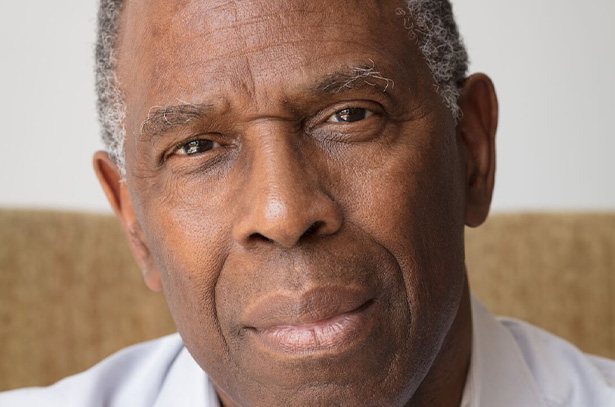
Charles Gaines
A pivotal figure in the field of conceptual art, Charles Gaines’ body of work engages formulas and systems that interrogate relationships between the objective and the subjective realms. Using a generative approach to create a series of works in a variety of mediums, he has built a bridge between the early conceptual artists of the 1960s and 1970s and subsequent generations of artists pushing the limits of conceptualism today.
Born in 1944 in Charleston, South Carolina, Gaines began his career as a painter, earning his M.F.A. from the School of Art and Design at the Rochester Institute of Technology in 1967. In the 1970s, Gaines’ art shifted dramatically in response to what he would later call ‘the awakening.’ Gaines’ epiphany materialized in a series called Regression (1973 – 1974), in which he explored the use of mathematical and numeric systems to create soft, numbered marks in ink on a grid, with each drawing built upon the calculations of the last. This methodical approach would carry the artist into the subsequent decades of his artistic journey.
Working both within the system and against it, Gaines points to the tensions between the empirical objective and the viewers’ subjective response. The concept of identity politics has played a central role within Gaines’ oeuvre, and the radical approach he employs addresses issues of race in ways that transcend the limits of representation.
Gaines lives and works in Los Angeles. He has been the subject of numerous exhibitions in the United States and around the world, most notably a major survey at The Institute of Contemporary Art, Miami, which traveled to the Phoenix Art Museum; a mid-career survey at the Pomona College Museum of Art and the Pitzer College Art Gallery in Claremont CA; a museum survey of early works at The Studio Museum, Harlem NY and the Hammer Museum, Los Angeles CA; and presentations at the 1975 Whitney Biennial and the Venice Biennale in 2007 and 2015. An exhibition of his work is also currently on long-term view at Dia:Beacon in New York. In 2022, Gaines launched his most ambitious public art project yet, ‘The American Manifest,’ presented by Creative Time, Governors Island and Times Square Arts. The third and final chapter of ‘The American Manifest,’ organized by Creative Time, will travel to the banks of the Ohio River in 2025. Additional forthcoming public commissions include the mural ‘Numbers and Trees: Cincinnati Cottonwoods,’ organized by Cincinnati nonprofit ArtWorks (June 2025); ‘Hanging Tree’ at Equal Justice Initiative’s Freedom Monument Sculpture Park in Montgomery AL (June 2025); and a new work for the Intuit Dome in Inglewood CA (spring 2026). Gaines will be an artist-in-residence at Hauser & Wirth Somerset in spring 2025 and a book of his collected writings will be released by Hauser & Wirth Publishers in spring 2026.
In addition to his artistic practice, Gaines was on the faculty at CalArts School of Art for over 30 years, establishing a fellowship to provide critical scholarship support for Black students in the M.F.A. Art program. He has published several essays on contemporary art, including ‘Theater of Refusal: Black Art and Mainstream Criticism’ (University of California, Irvine, 1993) and ‘The New Cosmopolitanism’ (California State University, Fullerton, 2008). In 2019, Gaines received the 60th Edward MacDowell Medal. He was inducted into the National Academy of Design’s 2020 class of National Academicians and the American Academy of Arts and Letters in May 2022. In 2023, he received an honorary doctorate from his alma mater, the Rochester Institute of Technology in New York.
Gaines’ work is included in prominent public collections such as the Museum of Modern Art, New York NY; Whitney Museum of American Art, New York NY; The Studio Museum, Harlem NY; Hirshhorn Museum and Sculpture Garden, Washington DC; Museum of Contemporary Art, Chicago IL; Hammer Museum, Los Angeles CA; Los Angeles County Museum of Art, Los Angeles CA; Museum of Contemporary Art, Los Angeles CA; San Francisco Museum of Modern Art, San Francisco CA; and Tate, London, UK.

Luchita Hurtado
Born in Maiquetía, Venezuela, in 1920, Luchita Hurtado dedicated over eighty years of her extensive oeuvre to the investigation of universality and transcendence. Developing her artistic vocabulary through a coalescence of abstraction, mysticism, corporality and landscape, the breadth of her experimentation with unconventional techniques, materials and styles speak to the multicultural and experiential contexts that shaped her life and career. Hurtado emigrated to the United States in 1928, settling in New York where she attended classes at the Art Students League. She relocated to Mexico City in the late 1940s and then moved to San Francisco Bay in the following decade. Eventually, Hurtado settled in Santa Monica, California and frequently visited her second home in Taos, New Mexico.
Although she associated with a vast network of internationally renowned artists and intellectuals, including members of the Dynaton, the Mexican muralists, and the Surrealists, Hurtado’s practice had always remained an independent pursuit. Her body of work cohered through an examination of self-affirmation, introduced in her early period from the 1940s to the 1960s. This output was defined by surrealist figuration, biomorphism and geometric abstraction, executed in brightly hued palettes with striking expressive range. Hurtado’s work continued to evolve throughout the 1960s and 1970s, demonstrating a fluid shift towards representative figuration that led to a production of contemplative self-portraits known as her ‘I Am’ paintings. Asserting her presence through a personal perspective of the body—rendered from above at skewed angles—Hurtado coalesced the viewer’s gaze with hers, utilizing the unexpected position of the floor as a backdrop and juxtaposing soft corporeal lines against the hard-edge geometric patterns of the environments beneath her. This series was followed by a group of surrealist ‘Body Landscapes’, in which human figures assume the form of mountains and desert sand dunes, as well as Hurtado’s late 1970s ‘Sky Skin’ series, where feathers weightlessly float in bright blue skies. The works from this period were informed by Hurtado’s newly reinforced feminist ideals and involvement with the Los Angeles Council of Women Artists. Many members of this group would later form the Woman’s Building in Los Angeles, where the Hurtado’s first solo exhibition was hosted in 1974.
In more recent years, Hurtado continued to explore themes of language and nature with her work, focusing on the planet, natural elements, and the environment in recognition of the urgency of the ecological crisis. These works function as symbolic proxies and intimate meditations on the Earth as mystic progenitor, underscoring the interconnectedness between corporeality and the natural world.
In 2019, Hurtado was listed in TIME 100’s most influential people and received the Americans for the Arts Carolyn Clark Powers Lifetime Achievement Award. Hurtado’s first solo museum exhibition, ‘I Live I Die I Will Be Reborn,’ opened at the Serpentine Sackler Gallery in London in 2019 when the artist was 98 years old. The exhibition then travelled to the Los Angeles County Museum of Art in February 2020.
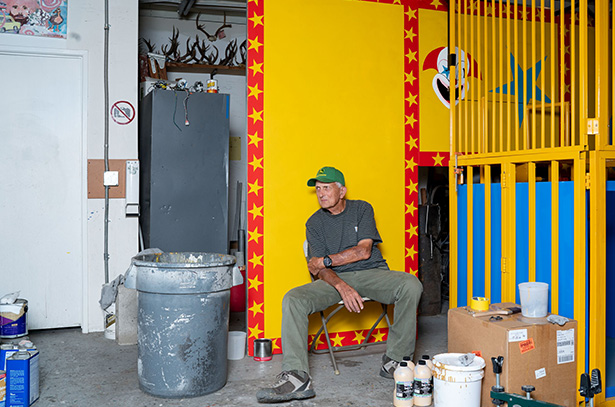
Richard Jackson
A pre-eminent figure in American contemporary art since the 1970s, Richard Jackson is influenced by both Abstract Expressionism and action painting, exploring a performative painting process which seeks to extend the potential of painting by upending its technical conventions. Born in Sacramento, California in 1939, Jackson first came to international attention with a major presentation of his installation works at the Menil Collection, Houston, in 1988, followed by the 1992 exhibition, ‘Helter Skelter,’ at the Los Angeles Museum of Contemporary Art.Jackson’s work is process-oriented, and the structural aspect of his installations involves a high level of craftsmanship and engineering. However, the final application of paint is generated through an automated process which Jackson calls ‘activation.’ He equips his ‘painting machines’ with a network of pipes and hoses which, when deployed, cause violent eruptions of paint that immerse the work and surrounding area. The finished installations remain in the aftermath of this extreme and unpredictable performative action.
Jackson responds to the high-mindedness of painterly practice by repositioning painting as an everyday experience. For Jackson, paint is not a tool used to create a representational image, but is used as a ubiquitous liquid which is spurted, splattered and sprayed over the surface of his installations.
He draws on the visual lexicon of domestic environments, universal basic human activities, and hallmarks of the quintessential American life such as hunting and sports. By harnessing this imagery and combining it with a physically laborious and conceptually rigorous artistic practice, Jackson has produced a body of work that questions and challenges the structure of the art world at large for over four decades.
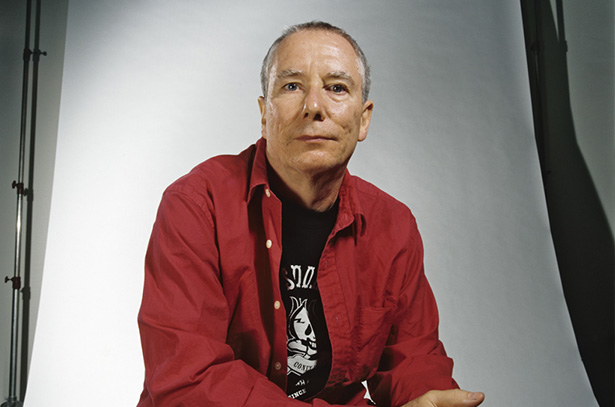
Mike Kelley
Mike Kelley is widely considered one of the most influential artists of our time. Originally from a suburb outside of Detroit, Kelley attended the University of Michigan, Ann Arbor, before moving to Southern California in 1976 to study at California Institute of the Arts from which he received an MFA in 1978. The city of Los Angeles became his adopted home and the site of his prolific art practice. In much of his work, Kelley drew from a wide spectrum of high and low culture, and was known to scour flea markets for America’s cast-offs and leftovers. Mining the banal objects of everyday life, Kelley elevated these materials to question and dismantle Western conceptions of contemporary art and culture.
Starting out in the late 1970s, Kelley became known for performance and installation based works; he came to prominence in the 1980s with a series of sculptures composed of common craft materials and stuffed animals. His work later widened in scope and physical scale, exemplified by ‘Educational Complex’ (1995), the ‘Kandors’ series (1999 – 2011), ‘Extracurricular Activity Projective Reconstruction’ series (2000 – 2011), and the posthumously completed public work ‘Mobile Homestead’ (2006 – 2013). These projects invoked a vast range of media and forms, illustrating the artist's versatility and underscored a number of Kelley's recurrent themes, such as repressed memory, sexuality, adolescence, class, and Americana, which were central to his artistic praxis. Throughout his career, Kelley also worked on curatorial projects, collaborated with many artists and musicians, and produced a formidable body of critical and creative writing.
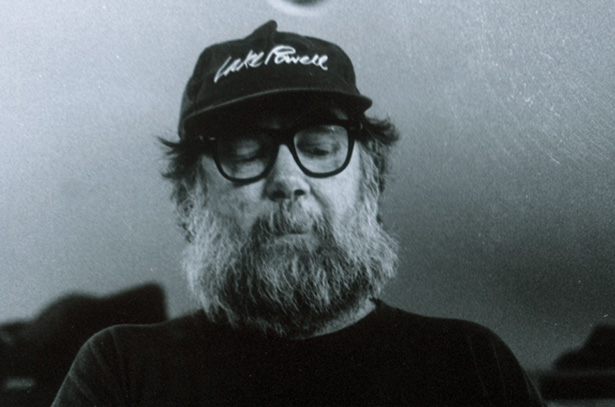
PAUL McCARTHY
Paul McCarthy is widely considered to be one of the most influential and groundbreaking contemporary American artists. Born in 1945, and raised in Salt Lake City, Utah, he first established a multi-faceted artistic practice, which sought to break the limitations of painting by using unorthodox materials such as bodily fluids and food. He has since become known for visceral, often hauntingly humorous work in a variety of mediums—from performance, photography, film and video, to sculpture, drawing and painting.
During the 1990s, he extended his practice into installations and stand-alone sculptural figures, utilizing a range of materials such as fiberglass, silicone, animatronics and inflatable vinyl. Playing on popular illusions and cultural myths, fantasy and reality collide in a delirious yet poignant exploration of the subconscious, in works that simultaneously challenge the viewer’s phenomenological expectations.
Whether absent or present, the human figure has been a constant in his work, either through the artist‘s own performances or the array of characters he creates to mix high and low culture, and provoke an analysis of our fundamental beliefs. These playfully oversized characters and objects critique the worlds from which they are drawn: Hollywood, politics, philosophy, science, art, literature, and television. McCarthy’s work, thus, locates the traumas lurking behind the stage set of the American Dream and identifies their counterparts in the art historical canon.
McCarthy earned a BFA in painting from the San Francisco Art Institute in 1969, and an MFA in multimedia, film and art from USC in 1973. For 18 years, he taught performance, video, installation, and art history in the New Genres Department at UCLA, where he influenced future generations of west coast artists and he has exhibited extensively worldwide. McCarthy’s work comprises collaborations with artist-friends such as Mike Kelley and Jason Rhoades, as well as his son Damon McCarthy.
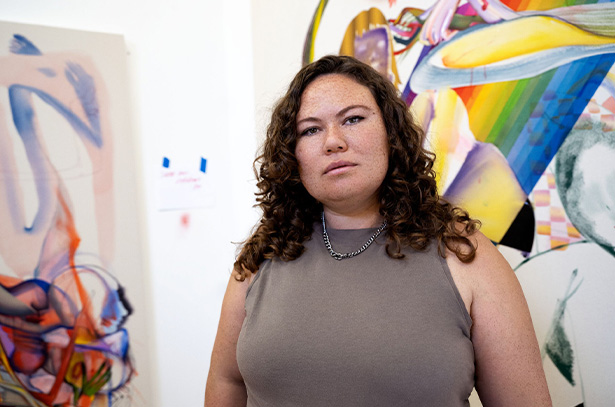
Christina Quarles
Christina Quarles (b. 1985) is a Los Angeles-based artist, whose practice works to dismantle and question assumptions and ingrained beliefs surrounding identity and the human figure. Born in Chicago and raised by her mother in Los Angeles, Quarles took art classes from an early age. She developed a solid foundation for a lifelong drawing practice through after-school programs and figure drawing classes at the Los Angeles County High School for the Arts.
In 2007, Quarles graduated from Hampshire College with dual BA degrees in Philosophy and Studio Art, then trained and worked in the field of graphic design. As her immersion in drawing progressed, she became well versed in and heavily influenced by the imagery and painterly processes of art historical masters David Hockney and Philip Guston, among others. Seeking a vehicle for expressing feelings and experiences language alone cannot capture, Quarles went on to attend Yale University, where she received her MFA in 2016. She studied at the Skowhegan School of Painting and Sculpture that same year.
Even in her earliest works, Quarles honed in on the bodily experience as her subject, beginning an artistic engagement with the contradictions inherent in one’s own complex, nuanced identity. At Yale, she worked on paper with gestural line making, later translating these forms onto large canvases that allowed her to make broader compositions. These early canvases regularly included written phrases, puns, and patterns that played with ambiguity and manipulated space, simultaneously anchoring and displacing figures. A defined plane with flowers could be a field or blanket, a sky-blue gradient could represent natural light or the flat surface of a desktop computer, as in ‘Let Us In Too (Tha Light)’ (2018).
In her current work, Quarles has moved text from the paintings themselves and into her titles, further winnowing out a predetermined visual narrative. These titles are inspired by overheard phrases, such as in the installation ‘Forced Perspective (And I Kno It’s Rigged, But It’s tha Only Game in Town)’ (2018), a highlight of the Hammer Museum’s ‘Made in L.A.’ exhibition. In that large-scale work, Quarles combined trompe l’oeil floral wallpaper and raw canvas with inscribed poetry and song lyric quotes, to suggest the illusory boundaries that define the self and our often limited interpretations of it.
As her practice has developed, Quarles has engaged in more overtly political subject matter. In 2018, she began work on ‘Casually Cruel’ (2018), heavily influenced by the situation at the US/Mexican border where families were subject to brutal separation. In this painting, two figures are enclosed by a blue plane covered with swirling green lines in a scene sandwiched between stretches of raw canvas. A third figure appears in the blue and green plane, its legs and limbs both trapped and separated from the others.
In terms of technique, Quarles’ avid experimentation and focus on transfiguring the material terrain of the canvas, connects her with such predecessors as late American artist Jack Whitten. Approaching the canvas with no predetermined composition, Quarles begins making marks that evolve into line drawings of human forms and body parts. She then photographs the work and uses Adobe Illustrator to draw the backgrounds and structures that ultimately surround the figures. In a reversal of the typical layering of a composition, Quarles’ figures precede and even dictate the environment that they come to inhabit. Once the composition is created digitally, she paints it onto the canvas, using stencils created by hand or by a vinyl plotter as a guide. Intersecting color, texture, and layers, the resulting works are more akin to relief sculpture than conventional painting—a material outcome that further underscores Quarles’ themes of embodiment and experience for both the artist and the viewer.
Quarles has been the recipient of several awards and grants. She was the inaugural recipient of the 2019 Pérez Art Museum Miami Prize, in 2017 she received the Rema Hort Mann Foundation Emerging Artist Grant, and in 2015 she received the Robert Schoelkopf Fellowship at Yale University. In addition, she participated in the Fountainhead Residency in 2017.
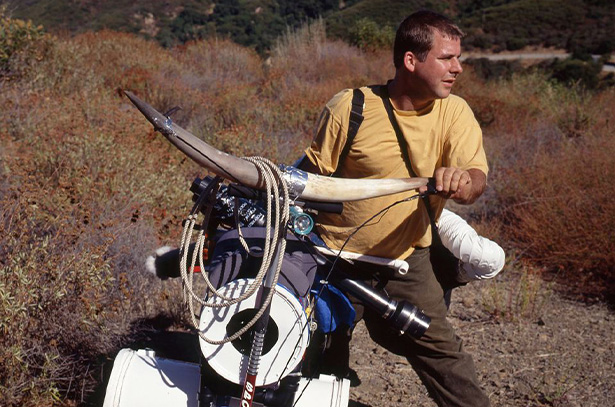
Jason Rhoades
Jason Rhoades (1965 – 2006) was a visionary artist and world builder for whom sculpture and myth were intertwined forms of construction. His epic assemblage installations established him as a force of the international art world in the 1990s, while based in Los Angeles. America was his art’s imaginative subject, which he represented with a provocative sense of irony and materialism, along with disarming humor and authentic identification.
Working on an architectural scale, Rhoades created immersive environmental sculptures that deployed copious quantities of consumer goods (Q-tips, computers, knickknacks), building supplies (plastic buckets, Sheetrock, extension cords), media (video games, hip-hop music, porn) and neon light. Imbued with a barely contained sense of chaos, these works are also highly crafted and surprisingly formal in their composition. Pattern, order, information networks, narrative threads, color and line give shape to Rhoades’ installations as diagrammatic depictions and systems of meaning. He considered art a tool for pursuing life’s big questions and dedicated major works to exploring the act of creation as signified by a garage, the brain, Brancusi’s studio and a penis, among other metaphorical sites. The car was also instrumental to Rhoades’ project as a readymade sculpture, as a conceptual space akin to the studio and as a vehicle for the driving ambition he held for his art. 'If you know my work', he said, 'you know that it is never finished'.

Gary Simmons
One of the foremost artists of a generation which emerged during the late 1980s and early 1990s, Gary Simmons has achieved wide acclaim over the past three decades for his work which explores the politics of race, class and social stereotypes through painting, sculpture, sound and architectural environments. Simmons uses imagery drawn from popular culture to create works that address personal and collective memories.
Born in New York in 1964, Simmons received his BFA from the School of Visual Arts in 1988, and his MFA from CalArts in 1990, studying under the tutelage of Charles Gaines, Michael Asher, Catherine Lord, and others. Early in his practice, Simmons established a studio in a former school in New York City. At this stage, he was working predominantly in sculpture, a medium he would return to in subsequent decades. Works from this period, such as ‘Big Dunce’ (1989), use schoolroom objects to address racial inequality and institutional racism through the filter of childhood experience, themes seen most explicitly in ‘Six-X’ (1989), comprising six child-sized Ku Klux Klan uniforms hanging from a schoolhouse coatrack.
Simmons’ use of pedagogical motifs, in particular readymade chalkboards, led to the formal and aesthetic breakthrough that would inform much of his subsequent work, in which erasure of the image has been a powerful and recurring theme. Outlines of characters, scenes and words—based on 20th-century cartoons steeped in the racist traditions of minstrelsy, disappeared architectural sites, vintage film title cards, evaporating clouds of smoke and stars—are drawn or painted then blurred and smeared by hand. The tropes of erasure and ephemerality suggest the fleeting nature of memory and histories re-written. As the artist explains: ‘I started to think about how images on blackboards can never be fully erased. It was about trying to erase a stereotype and the traces of the racial pain that you drag along with you.’ A landmark piece commissioned for the Whitney Biennial, ‘Wall of Eyes’ (1993), picturing a smudged field of cartoon eyes drawn with chalk over slate paint applied directly to the wall, revealed the aesthetic possibilities of chalkboard at a monumental scale.
In further key commissions, Simmons has expanded beyond the confines of museum and gallery walls, creating performative and site-specific works which underline a relationship to a trajectory of art history that includes minimalism and conceptual art. For ‘Sky Erasure Drawings’ (1996), commissioned by the Museum of Contemporary Art Chicago, airplanes temporarily inscribed vapor stars in the daytime sky using liquid paraffin. For his immersive installation, ‘Fade to Black’ (2017), for the California African American Museum in Los Angeles, Simmons created five monumental wall drawings featuring the titles of vintage silent films and the names of largely forgotten African American actors in big typewriter-style letters blurred with ghostly traces. In a series of works from 2019, Simmons mined the architecture of surveillance through depictions of watchtowers and lighthouses. Deliberately ambiguous, these works collapsed the boundaries between signifiers of safety and those of control.
Simmons’ immersion in music has continually informed his practice which draws inspiration from dub, punk, hip-hop, reggae, and rap. Particularly influenced by the genres’ race and class-focused politics, the artist has created a number of works tracing the voices in music that have shaped contemporary culture. Simmons attracted significant critical attention in 2014 for his stacked speaker piece ‘Recapturing Memories of the Black Ark’. Inspired by Jamaican sound systems, the work is a living sculpture, with performers invited to activate it and then leave the configuration they utilized behind until the next performance. The work’s ongoing history offers both a contrasting and complementary approach to the record of the past offered by the artist’s erasure paintings.
For a site-specific installation commissioned for Culture Lab Detroit in 2016, Simmons was inspired by the guerrilla marketing style of fly-posting to promote gigs. Using found posters sourced from flea markets and the internet, he manipulated the originals, saturating the colors or reworking the texts, before layering onto the wall. This process has subsequently made its way into other works on plywood and canvas that evoke the fragmentation between individual and collective memory that preoccupies much of Simmons’ practice.
In his most recent works, Simmons continues to engage with popular culture, however, in an increasingly nuanced and abstracted way, as his focus shifts towards the history and materiality of painting and sculpture. Simmons has also reintroduced racist cartoon characters such as Bosko and Honey from the Looney Toons franchise and the crows from Disney’s film, ‘Dumbo’. Combined with the use of erasure, the artist references the attempt to cover up the engrained prejudices revealed by the popularity of such cartoons. Though these subjects first appeared in Simmons chalkboard drawings from the early 1990s, his newest works demonstrate an exploration of painterly issues such as background, depth of field, process and layering, citing Albert Oehlen and Martin Kippenberger as influences. The process involves a constant building and removal of up to fifteen layers of paint, evoking layered histories lying deep beneath the canvas. Simmons likens this effect to aged chalkboards, containing the traces of years of markings.
Gary Simmons has been the subject of solo exhibitions both nationally and internationally, including Henry Art Gallery, Seattle; California African American Museum, Los Angeles; Modern Art Museum of Fort Worth; and Kunsthaus Zürich. Selected group exhibitions include Museum of Modern Art, New York; Walker Art Center, Minneapolis; and Stedelijk Museum, Amsterdam; among others. Simmons was featured in Thelma Golden’s landmark 1994 ‘Black Male’ exhibition at the Whitney Museum of American Art in New York, Franklin Sirmans’ 2014 Prospect Triennial in New Orleans, and Okwui Enwezor’s ‘All the World’s Futures,’ for the 2015 Venice Biennale.
In 2021, Simmons was appointed a National Academician by the National Academy of Design. He is the recipient of the Joyce Alexander Wein Prize, Studio Museum of Harlem; USA Gund Fellowship; Penny McCall Foundation Grant; InterArts Grant; National Endowment for the Arts; and the Aspen Award for Art.
The first comprehensive institutional survey of Simmons’ work, ‘Gary Simmons: Public Enemy,’ was on view at Museum of Contemporary Art Chicago in 2023 and traveled to Pérez Art Museum Miami from 2023 – 2024.
Inquire about available works
In Focus: LA Artists
The gallery will expand its Los Angeles presence with a second location opening fall 2022 in West Hollywood. The new venue will occupy the site of a vintage automobile sales showroom at 8980 Santa Monica Boulevard and will complement the Arts District venue.
–
‘In Focus: LA Artists’ is on view now through 22 August 2021 at Hauser & Wirth Los Angeles.
Current Exhibitions
1 / 10

